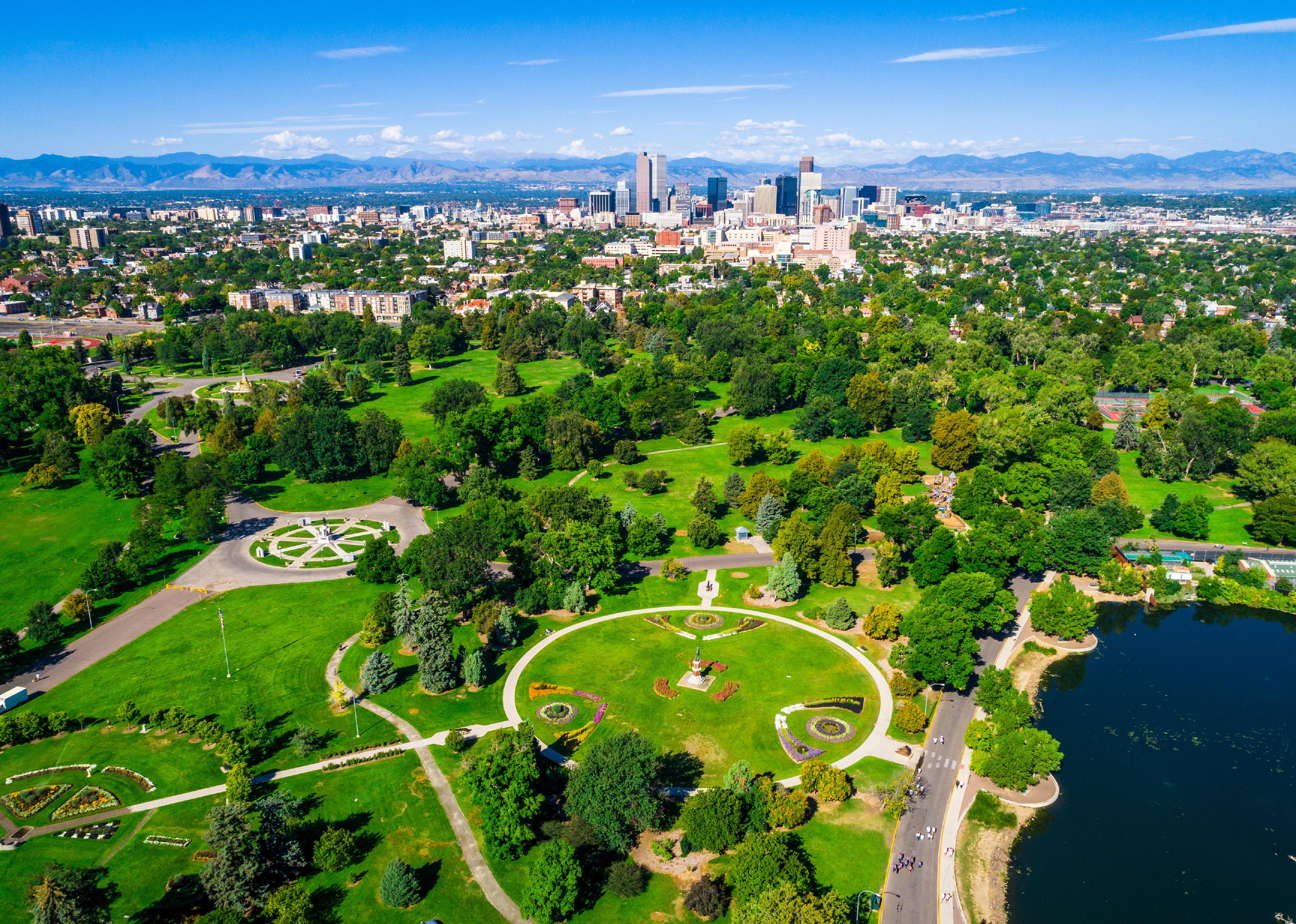
25 cities with the highest percentage of parkland
This story originally appeared on Rocket Homes and was produced and distributed in partnership with Stacker Studio.
25 cities with the highest percentage of parkland
When deciding whether a community is a good place to live, people advise studying the city's walkability, public school ratings, road conditions, traffic, and cost of living, among other factors. But don't forget to consider the quality of its park system, too. Residents benefit from access to parkland in a variety of ways: Parks encourage physical activity and provide spaces where people can get together and interact socially. Besides physical and mental health benefits, green space can help preserve wildlife and reduce the effects of climate change, according to the Environmental Protection Agency.
These spaces can also provide communities with significant economic value, according to the National Recreation and Park Association. Good parks can increase property values because people want to live near them. Cities that invest in having parks with plenty of open and green space can also save money because plants and trees capture stormwater, helping mitigate the impact of flooding and damage from overflowing storm drains.
Rocket Homes examined the Trust for Public Land's 2023 ParkScore Index to see which cities have the most public outdoor space for residents. The index rates the 100 largest cities based on multiple factors, including acreage, investment, amenities, access, and equity.
TPL defines parks as land accessible by residents. This includes playgrounds, trails, and open space, as well as publicly accessible private parks and school parks with a joint-use agreement. Parks in gated communities, golf courses, or playgrounds that do not have a joint-use agreement with the city were not included.
In the U.S., the median park size is 5.4 acres, and the typical city uses 9.8% of its land for parks, according to the TPL. Typically, cities design parks to serve various interests—they often have walking paths, hiking and biking trails, picnic areas, playgrounds, sports fields, and courts. Some cities—including many on this list—use the history or natural features of the area to make their parks more unique. They also can include specialized features like skate parks, public art, wildlife viewing areas, and swimming pools.
Did your city make the list? Read on to find out.
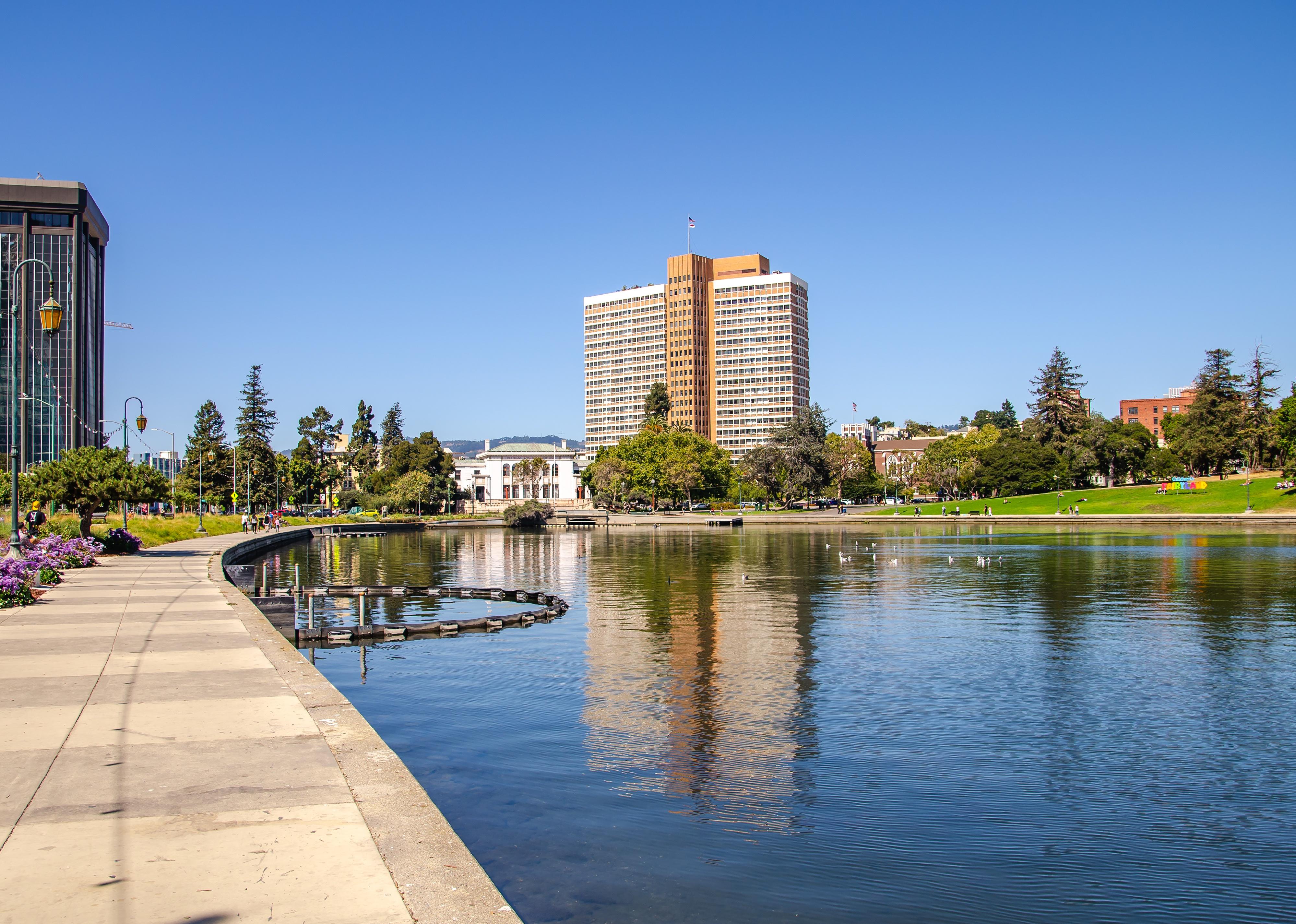
#25. Oakland, California
- Share of city that is parkland: 14.8%
- Median park size: 2.1 acres
- Share of residents within a 10-minute walk to a park: 89%
- Park spending per resident: $103
Within Oakland, there are 128 city-managed parks, as well as 10 parks managed by East Bay Regional Park District. Residents can escape the city and wander around the redwood trees at the 500-acre Joaquin Miller Park or the Dr. Aurelia Reinhardt Redwood Regional Park, which is part of the Old-Growth Forest Network.
Parts of the San Francisco Bay Trail wind through the city, allowing pedestrians and cyclists access to the shore. Lakeside Park on Lake Merritt also serves as the nation's largest wildlife refuge that attracts migratory birds.
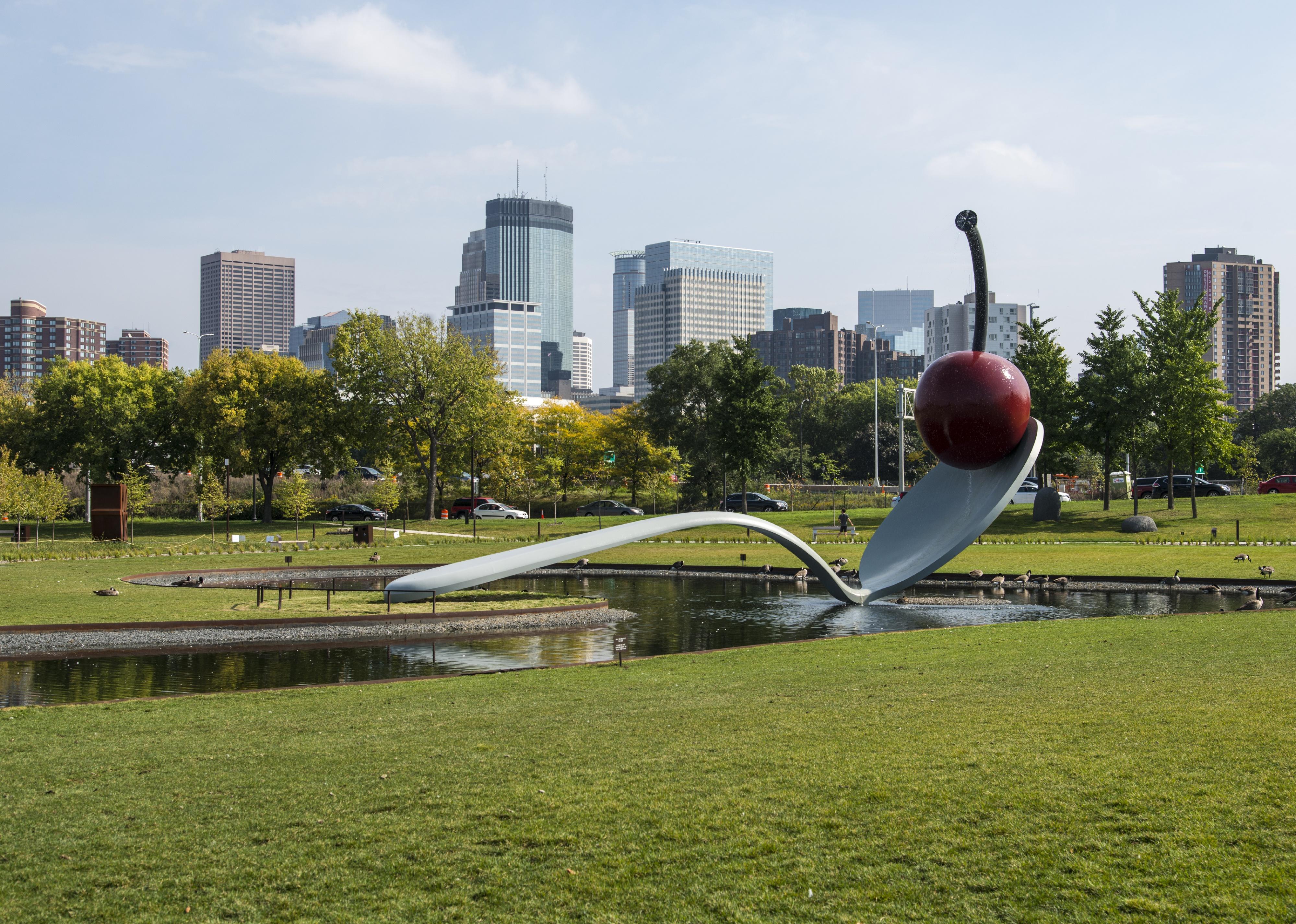
#24. Minneapolis
- Share of city that is parkland: 15.0%
- Median park size: 5.6 acres
- Share of residents within a 10-minute walk to a park: 98%
- Park spending per resident: $312
2023 marked the 140th anniversary of the Minneapolis Park and Recreation Board and its vast system of 185 neighborhood parks, as well as six regional parks. Many parks line the banks of the Mississippi River, including the Minneapolis Sculpture Garden, a partnership between the recreation board and Walker Art Center that features Claes Oldenburg and Coosje van Bruggen's iconic Spoonbridge and Cherry sculpture.
Parkgoers can also bike around the entire city on the Grand Rounds Scenic Byway, a 51-mile bike loop. The American Academy for Park and Recreation Administration, in partnership with the National Recreation and Park Association, recognized the quality of Minneapolis' park system as a 2021 finalist for the organization's National Gold Medal.
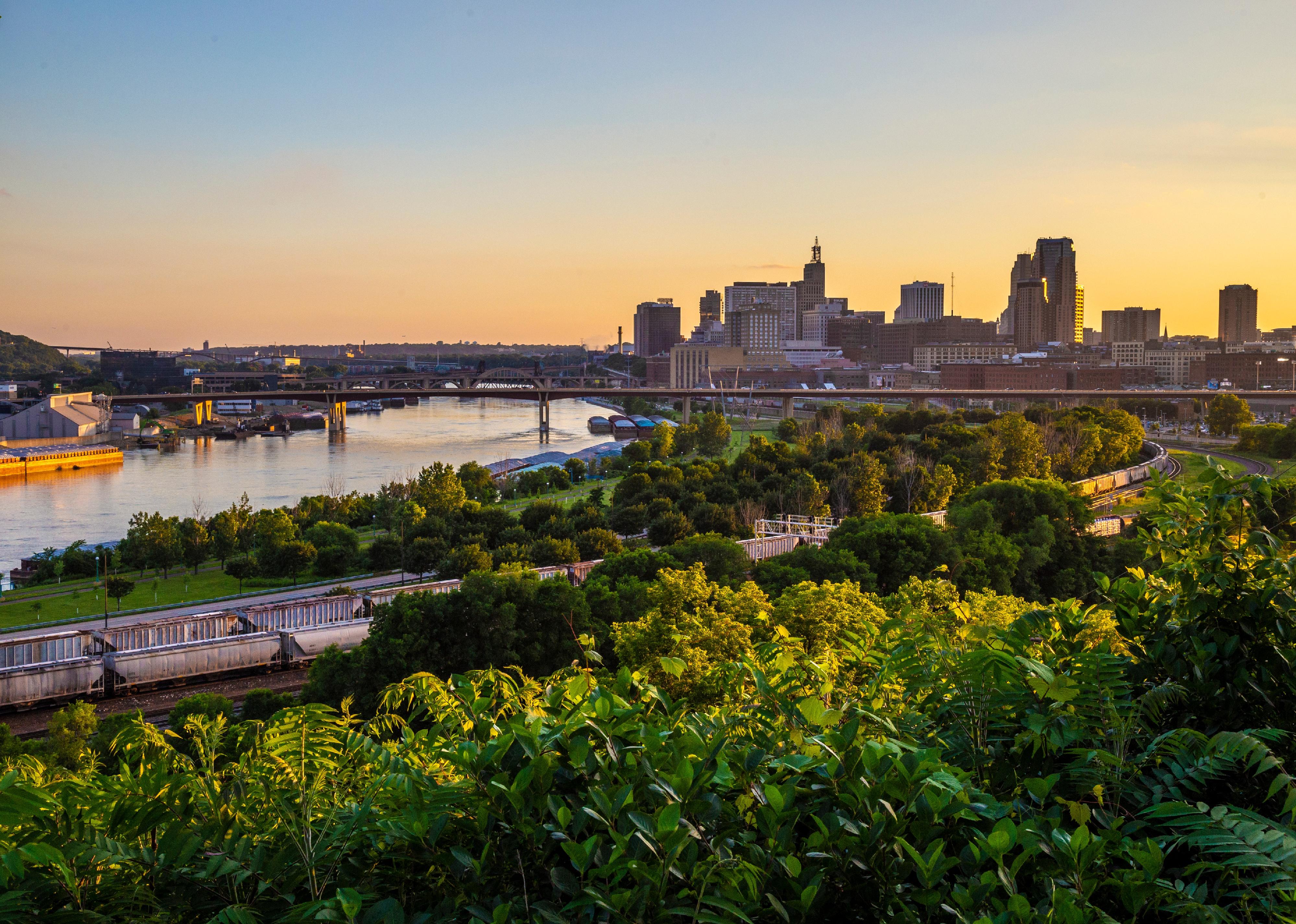
#23. St. Paul, Minnesota
- Share of city that is parkland: 15.4%
- Median park size: 3.2 acres
- Share of residents within a 10-minute walk to a park: 99%
- Park spending per resident: $246
Residents of St. Paul can enjoy relaxing along the Mississippi River at Lower Landing Park or go to one of the many citywide festivals in Mears Park. Como Regional Park is also within the city limits, and it boasts a lake, a large swimming pool, a zoo, a children's amusement park, and a conservatory.
To ensure residents have easy access to parks, the city enacted an ordinance in 2015 stipulating that new or expanded residential, commercial, industrial, and storage development must include dedicated park space.
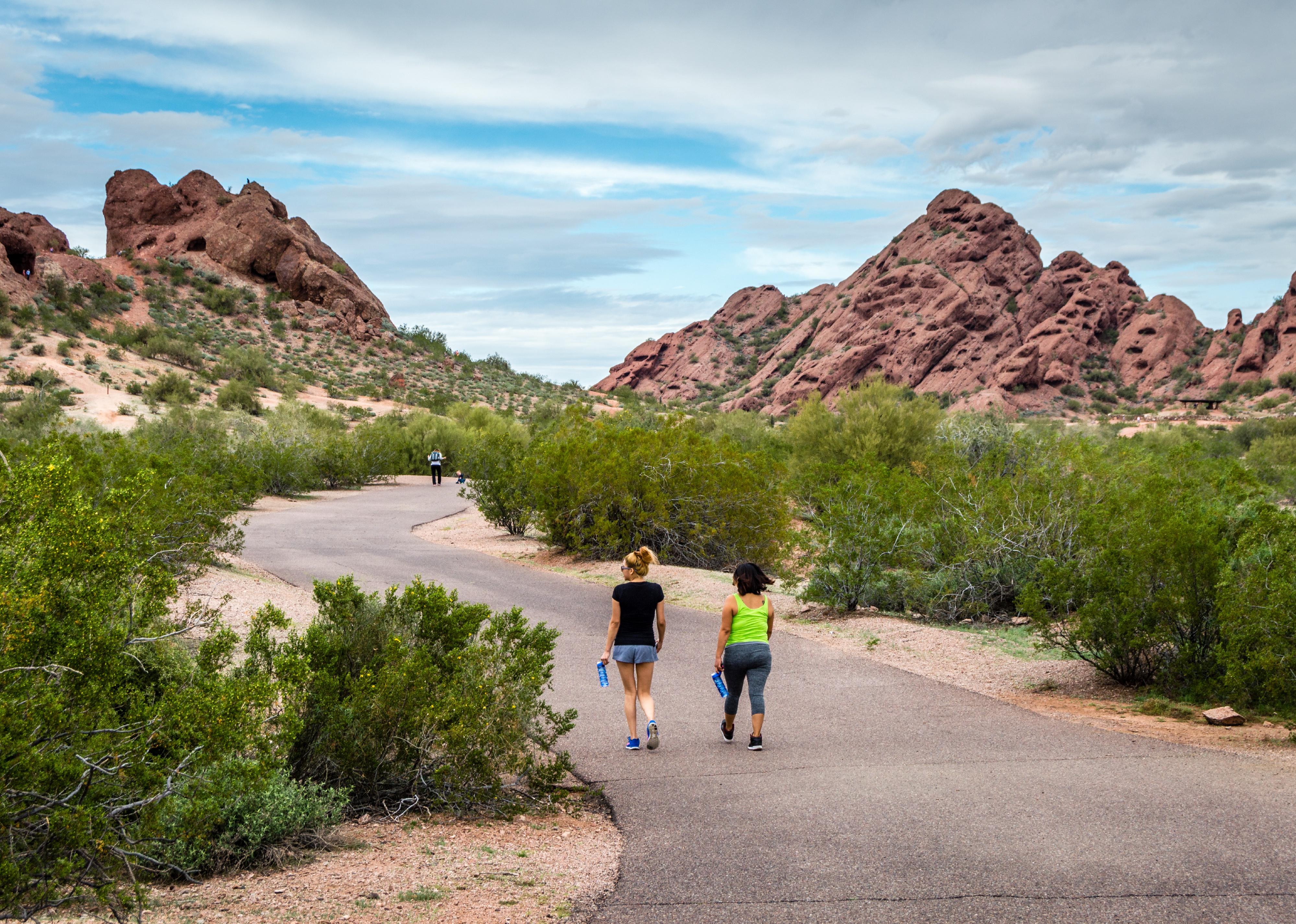
#22. Phoenix
- Share of city that is parkland: 15.5%
- Median park size: 14.6 acres
- Share of residents within a 10-minute walk to a park: 49%
- Park spending per resident: $93
Phoenix Parks and Recreation offers something for everyone in its 186 parks, including over 200 miles of trails, eight golf courses, and 29 swimming pools. One of the jewels of the park system is S'edav Va'aki Museum, formerly known as the Pueblo Grande Museum and Archaeological Park, which explores the ancestral Sonoran Desert people of the area.
In 1929, the city was the first in the nation to employ an archaeologist who works within the Parks and Recreation Department to manage projects relating to the city's historic and prehistoric past.
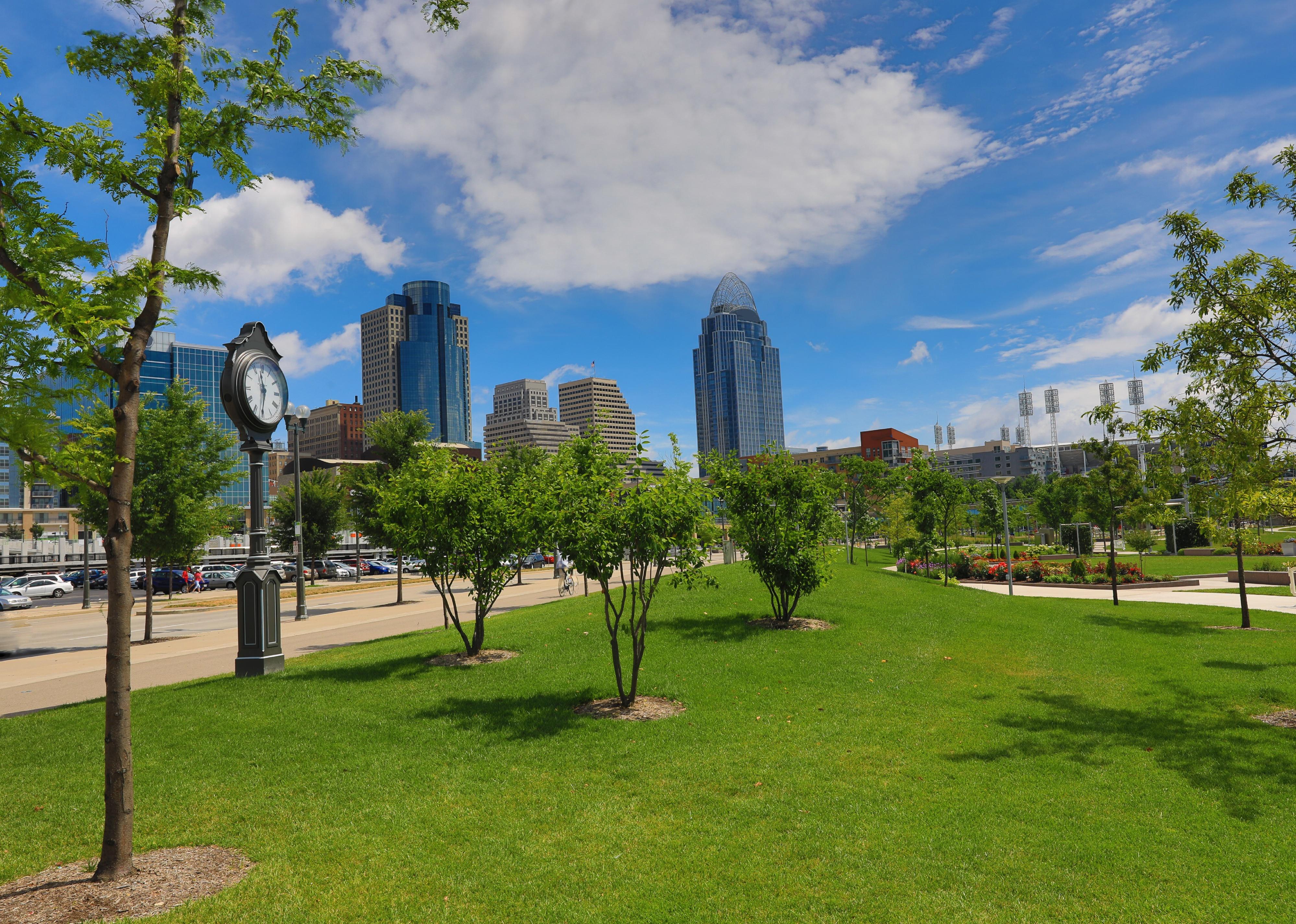
#21. Cincinnati, Ohio
- Share of city that is parkland: 16.6%
- Median park size: 4.2 acres
- Share of residents within a 10-minute walk to a park: 88%
- Park spending per resident: $181
Cincinnati is often thought of as a city within a park. The city offers a system of 109 regional parks, neighborhood parks, and nature areas that feature something for everyone.
As part of the city's revitalization of the Ohio River riverfront, it developed Smale Riverfront Park in 2015 as a connection to the city's downtown and other riverfront parks. In 2023, Midwest Living named Smale Park the Best City Park for its interactive features, carousel, gardens, and riverfront path.
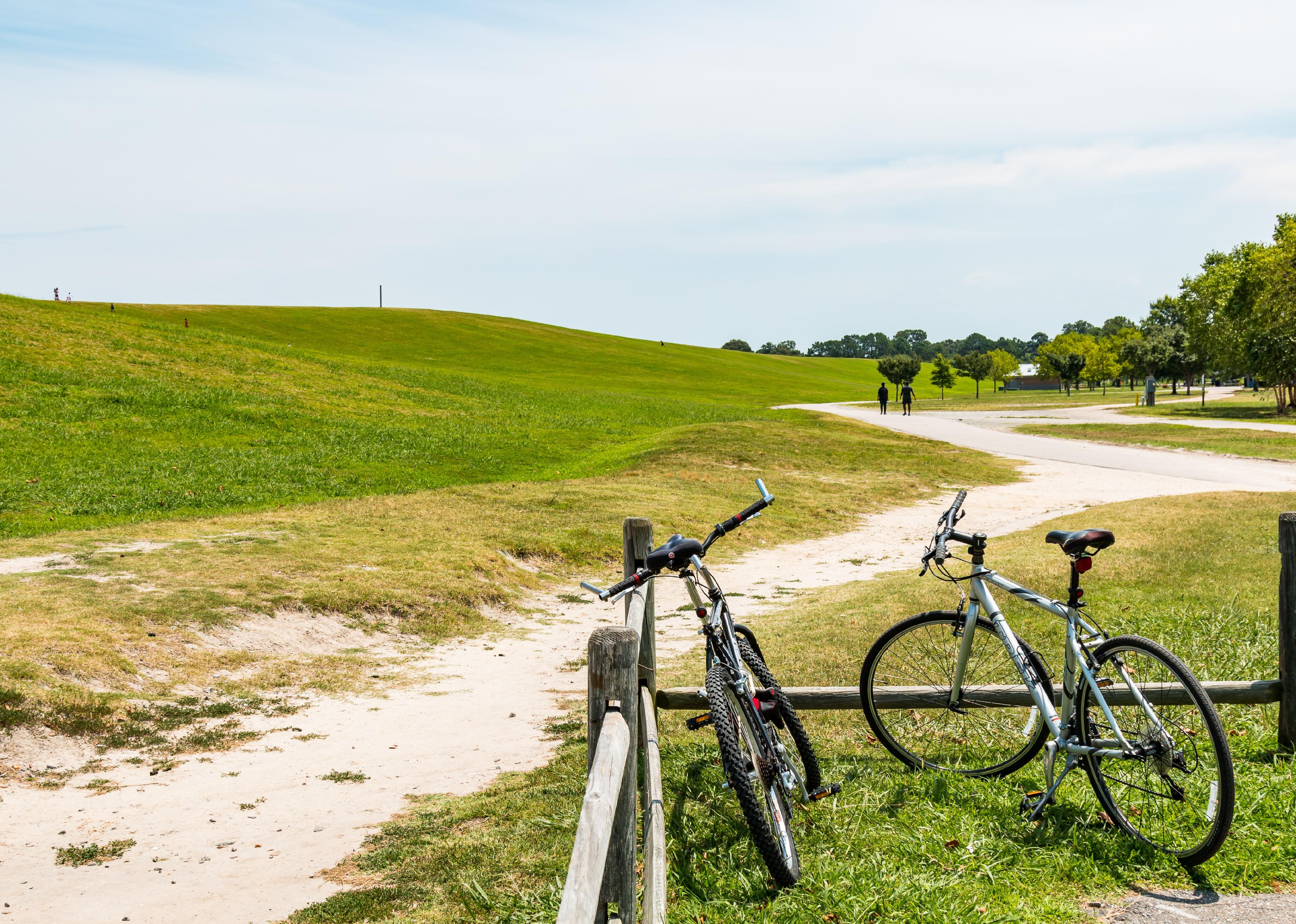
#20. Virginia Beach, Virginia
- Share of city that is parkland: 16.6%
- Median park size: 5.0 acres
- Share of residents within a 10-minute walk to a park: 68%
- Park spending per resident: $139
In 2023, the American Academy for Park and Recreation Administration named Virginia Beach's Parks and Recreation department a Gold Medal Finalist for the third year in a row.
The city offers over 200 parks with various activities, including biking, hiking, paddling, fishing, and more. Surfers can catch waves at Little Island Park. Mount Trashmore Park, the first park in the country to be built on a landfill, has two lakes, a 26,000-square-foot playground, and a 24,000-square-foot skate park with a competition-sized vert ramp.
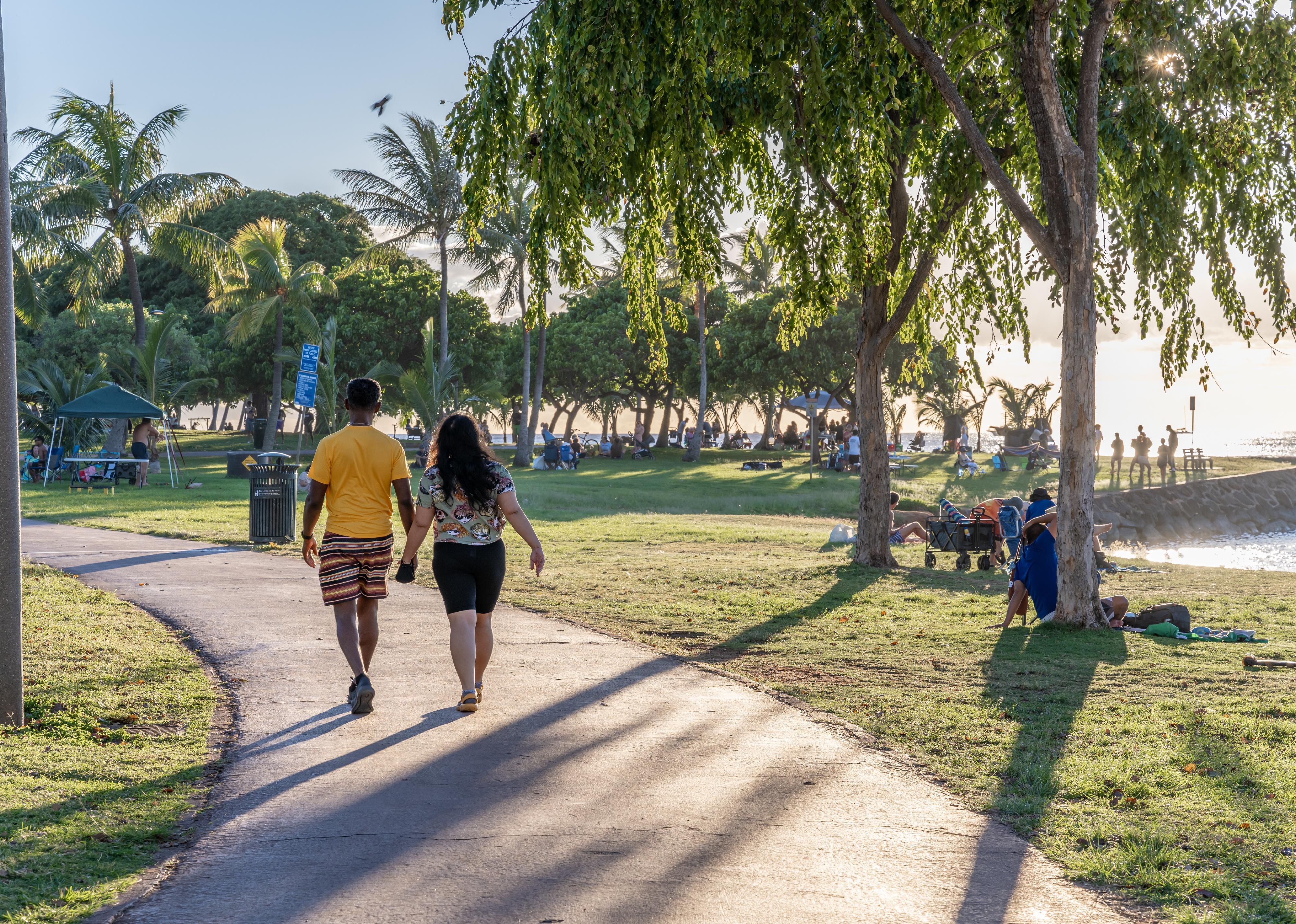
#19. Honolulu
- Share of city that is parkland: 17.2%
- Median park size: 6.1 acres
- Share of residents within a 10-minute walk to a park: 72%
- Park spending per resident: $121
Oahu's spectacular natural features are tough to beat, and the island's 402 park facilities help preserve that beauty. Kapi'olani Regional Park, a 200-acre park near Diamond Head, was opened in 1877 after King David Kalākaua donated royal land as a public park.
It is now home to the Honolulu Zoo. Also popular is Hanauma Bay Nature Preserve, where visitors can snorkel around a coral reef to view marine life.
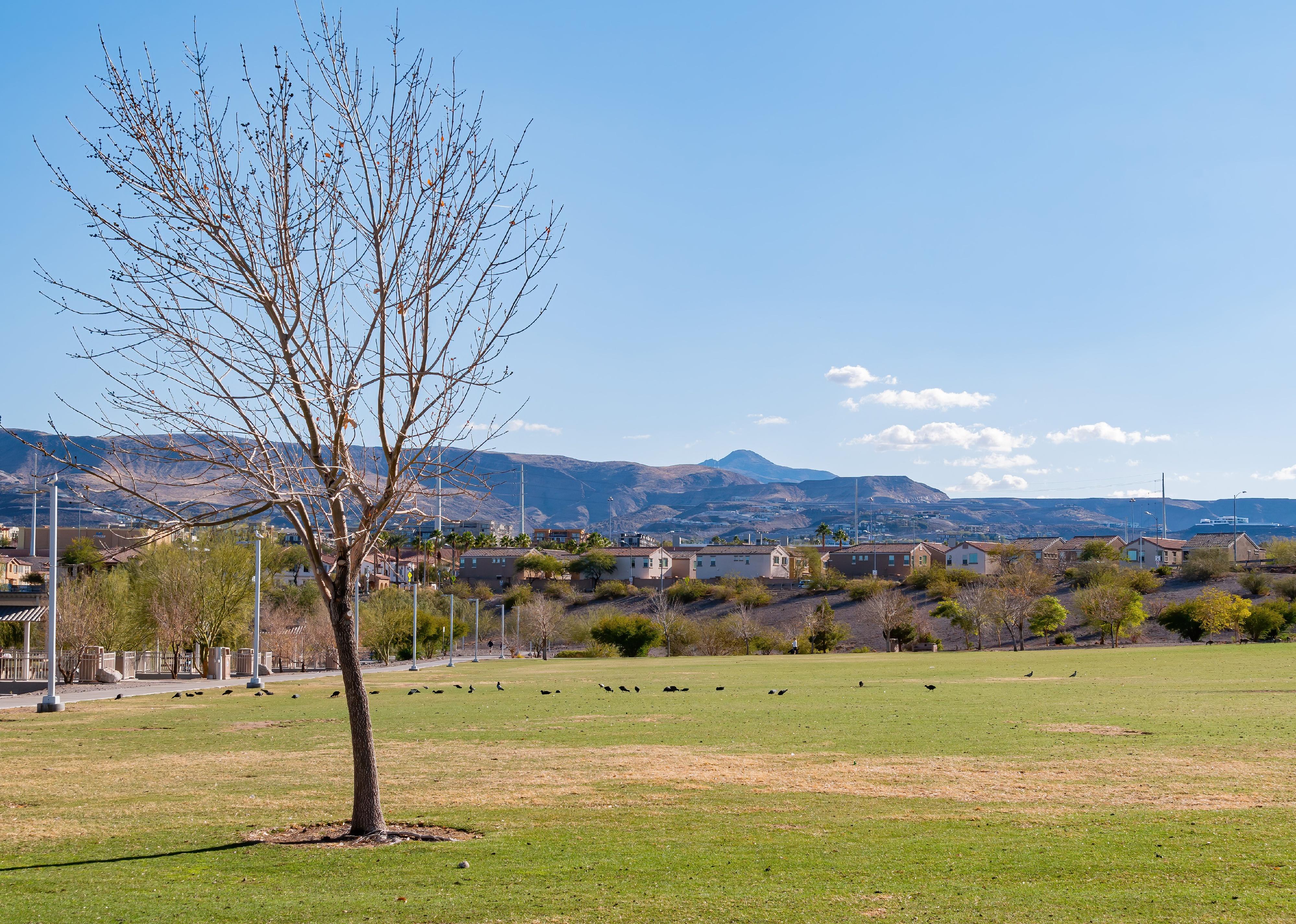
#18. Las Vegas
- Share of city that is parkland: 17.6%
- Median park size: 1.1 acres
- Share of residents within a 10-minute walk to a park: 74%
- Park spending per resident: $65
Residents of Las Vegas can enjoy over 100 parks and facilities, many with shaded play areas and outdoor exercise equipment. One of its gems is Floyd Lamb Park at Tule Springs.
This 680-acre park includes trails, fishing ponds, and a Nevada state tree nursery that sells native plants. A historic ranch on the grounds teaches visitors about what it was like to live in old Las Vegas—before the casinos came to town.
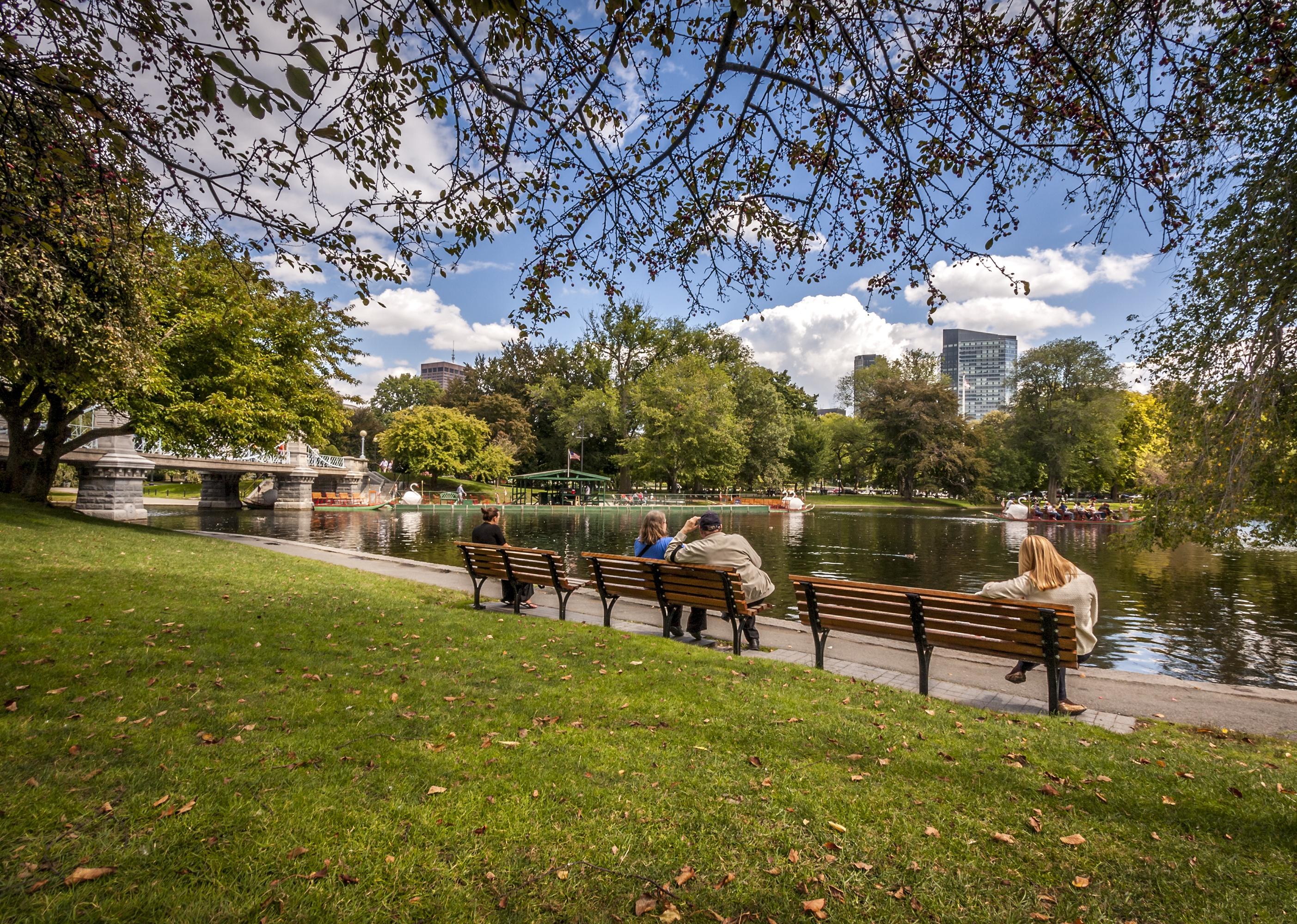
#17. Boston
- Share of city that is parkland: 17.7%
- Median park size: 1.4 acres
- Share of residents within a 10-minute walk to a park: 100%
- Park spending per resident: $176
Boston is home to America's oldest public park, Boston Common, which opened in 1634. It's located in the heart of the city next to Boston Public Garden, the country's first public botanical garden, created in 1837. Not everything in Boston is old, however.
The city is undertaking a $28 million revitalization of Franklin Park, which at 485 acres, clocks in as Boston's largest park. Part of Frederick Law Olmsted's Emerald Necklace of parks that connect the city's neighborhoods, it features trails, play spaces, a golf course, a sports stadium, and the Franklin Park Zoo.
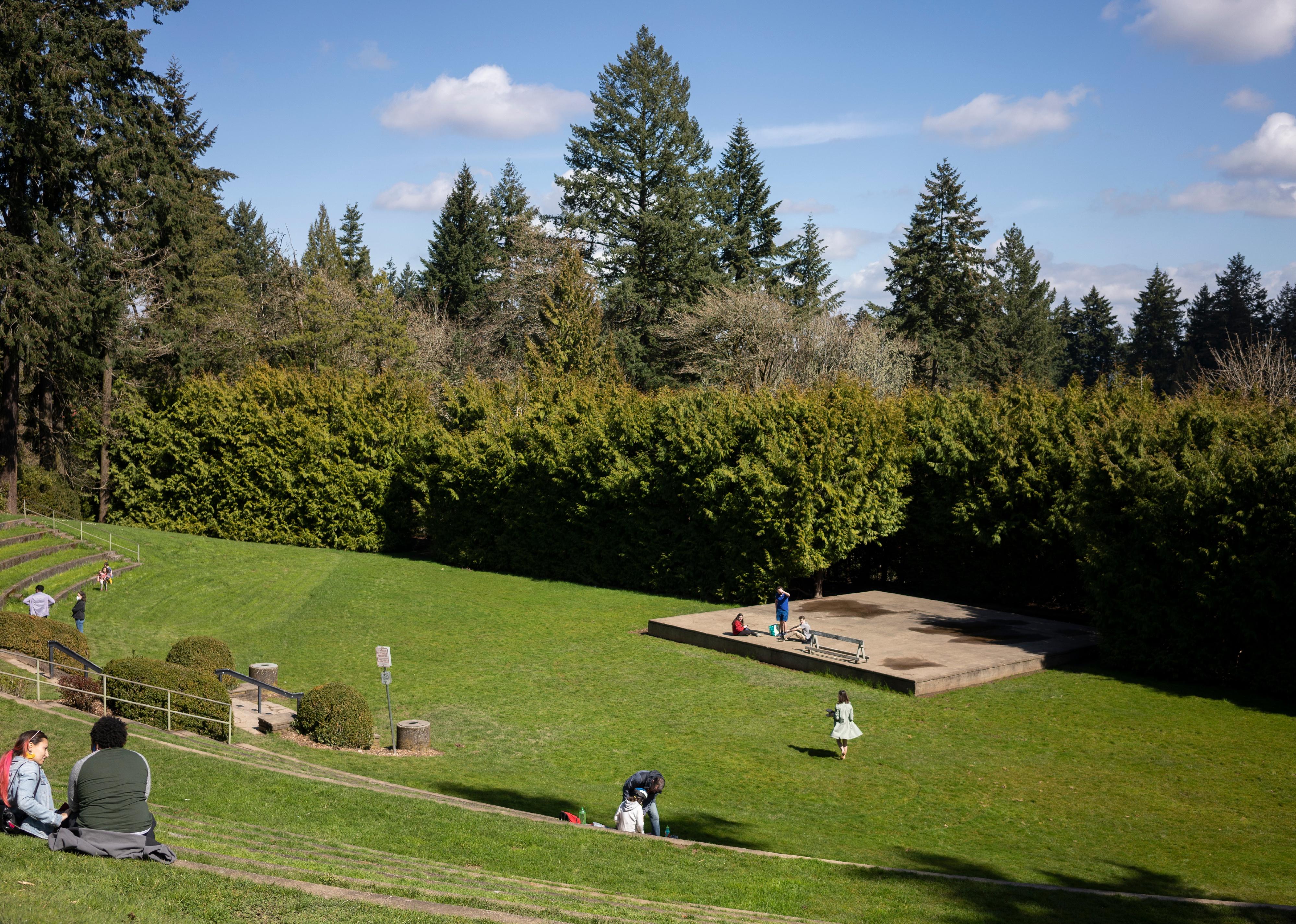
#16. Portland, Oregon
- Share of city that is parkland: 17.8%
- Median park size: 4.9 acres
- Share of residents within a 10-minute walk to a park: 90%
- Park spending per resident: $221
It's only fitting that the Rose City is home to the International Rose Test Garden. Located in Washington Park, it's where growers experiment with new varieties of roses that you may eventually see at your local garden store.
If the scent of thousands of roses is too much for you, hike up to Council Crest Park, located 1,073 feet above sea level. On a clear day, you can see Mount Adams, Mount Jefferson, Mount Hood, Mount St. Helens, and Mount Rainier, as well as a fantastic view of the city's skyline.
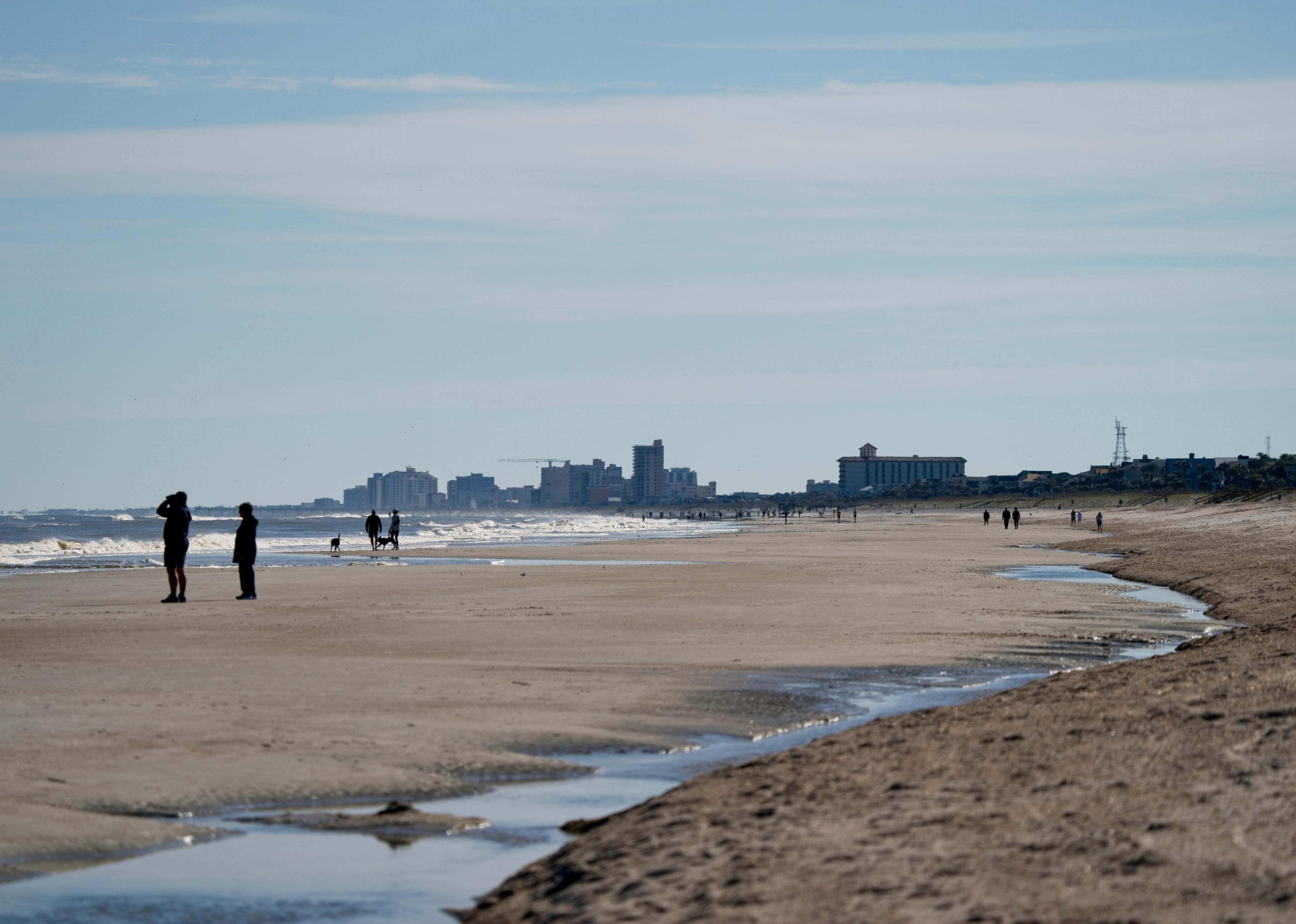
#15. Jacksonville, Florida
- Share of city that is parkland: 18.1%
- Median park size: 5.6 acres
- Share of residents within a 10-minute walk to a park: 35%
- Park spending per resident: $78
Jacksonville's abundant park system makes the most of its natural resources along the Atlantic coast and the St. Johns River, with beaches, trails, and playgrounds. While there are plenty of places to relax, you can also go fast on the go-kart track at 103rd Street Sports Complex, home of the North Florida Kart Club.
Under the jurisdiction of the National Park Service, Timucuan Ecological & Historic Preserve along the Atlantic coast features unspoiled coastal wetlands to explore via foot and kayak. It also details the history of a failed French colony, a plantation, and the Timucuan people.
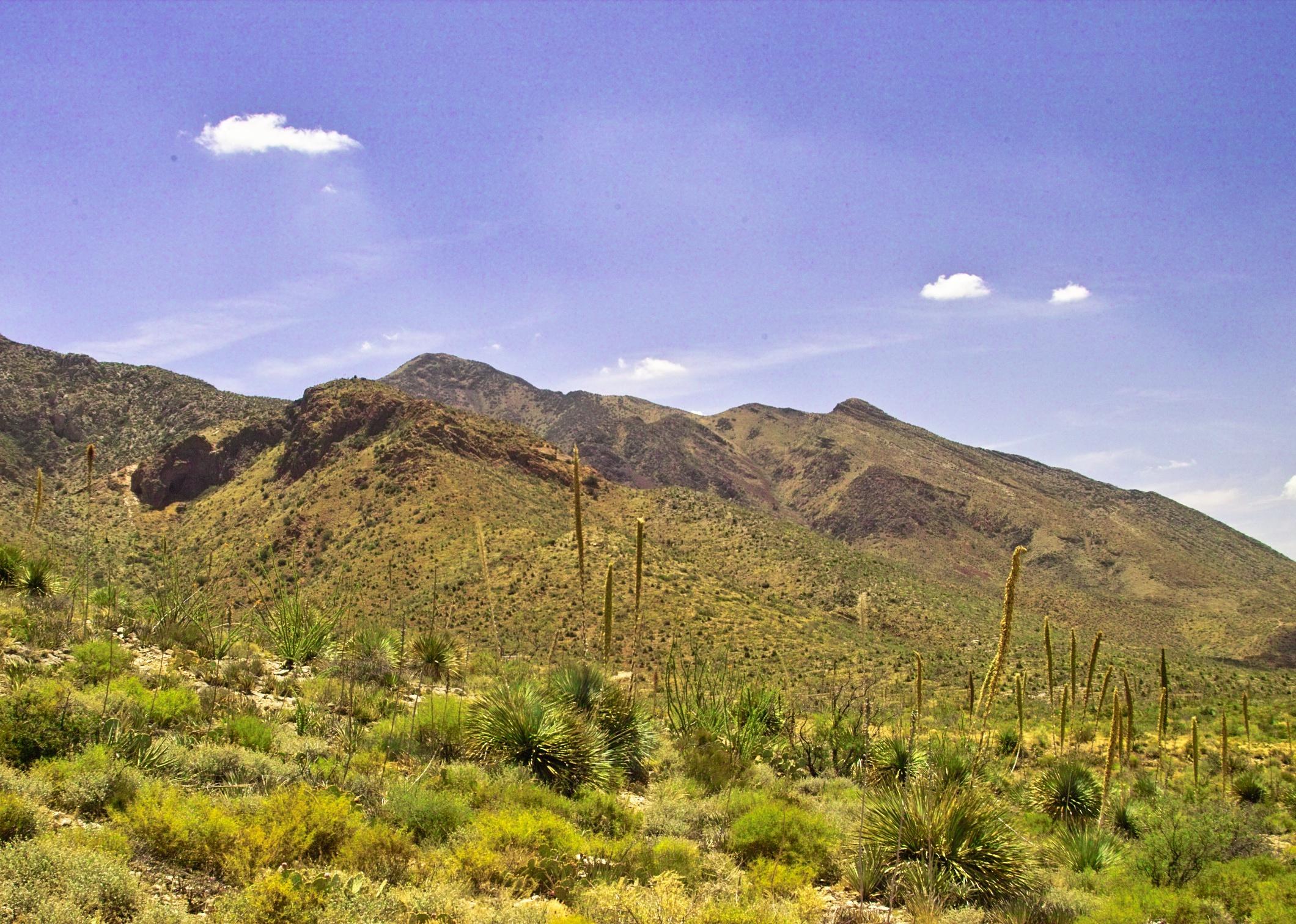
#14. El Paso, Texas
- Share of city that is parkland: 18.5%
- Median park size: 2.9 acres
- Share of residents within a 10-minute walk to a park: 62%
- Park spending per resident: $52
El Paso's parks attract adventurers, those who appreciate nature, and those who enjoy history. Franklin Mountains State Park rises 7,192 feet above sea level to provide a playground for rock climbers, cyclists, hikers, and bird watchers. Hueco Tanks State Park & Historic Site is a system of rock hills with huecos—or natural basins—that catch rainwater.
Parkgoers can also see more than 3,000 rock paintings created by prehistoric people. Plant lovers can check out the city's Desert Botanical Gardens and Municipal Rose Garden, and runners and cyclists can cruise along the border on River Park Trail. This 10.5-mile trail runs along the Rio Grande on the city's northwest side to the New Mexico border.
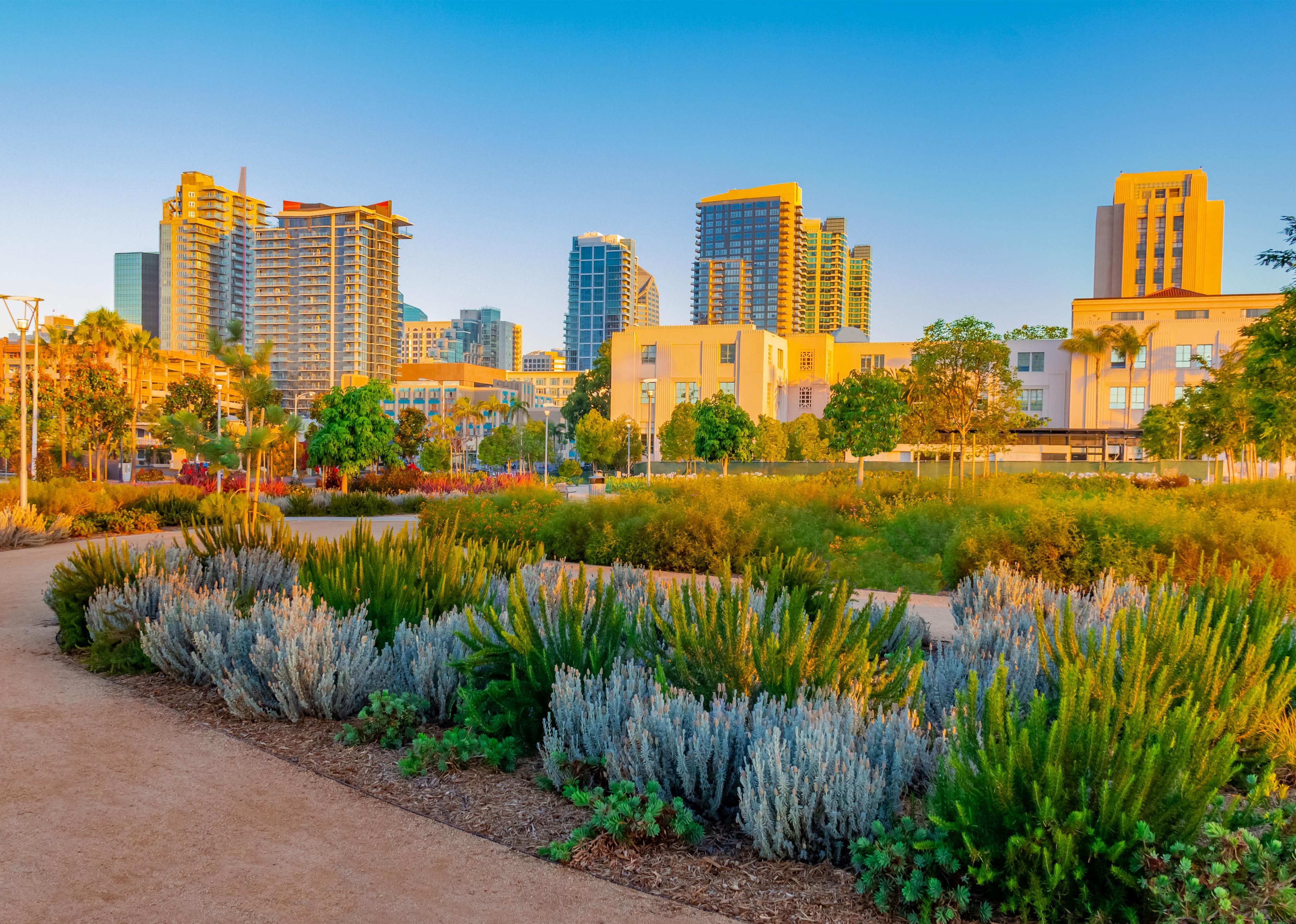
#13. San Diego
- Share of city that is parkland: 19.4%
- Median park size: 6.8 acres
- Share of residents within a 10-minute walk to a park: 81%
- Park spending per resident: $157
Balboa Park sprawls 1,200 acres across the center of San Diego, attracting 14 million visitors a year. Along with the world-famous San Diego Zoo, the park features the Old Globe Theatre and 15 museums, including the Comic-Con Museum and the House of Pacific Relations International Cottages. Its massive sports complex includes a swimming pool, tennis courts, a velodrome, and disc golf.
Other parks in the city take advantage of its beautiful coastline, including Fiesta Island Park and Tourmaline Surf Park, both havens for water lovers.
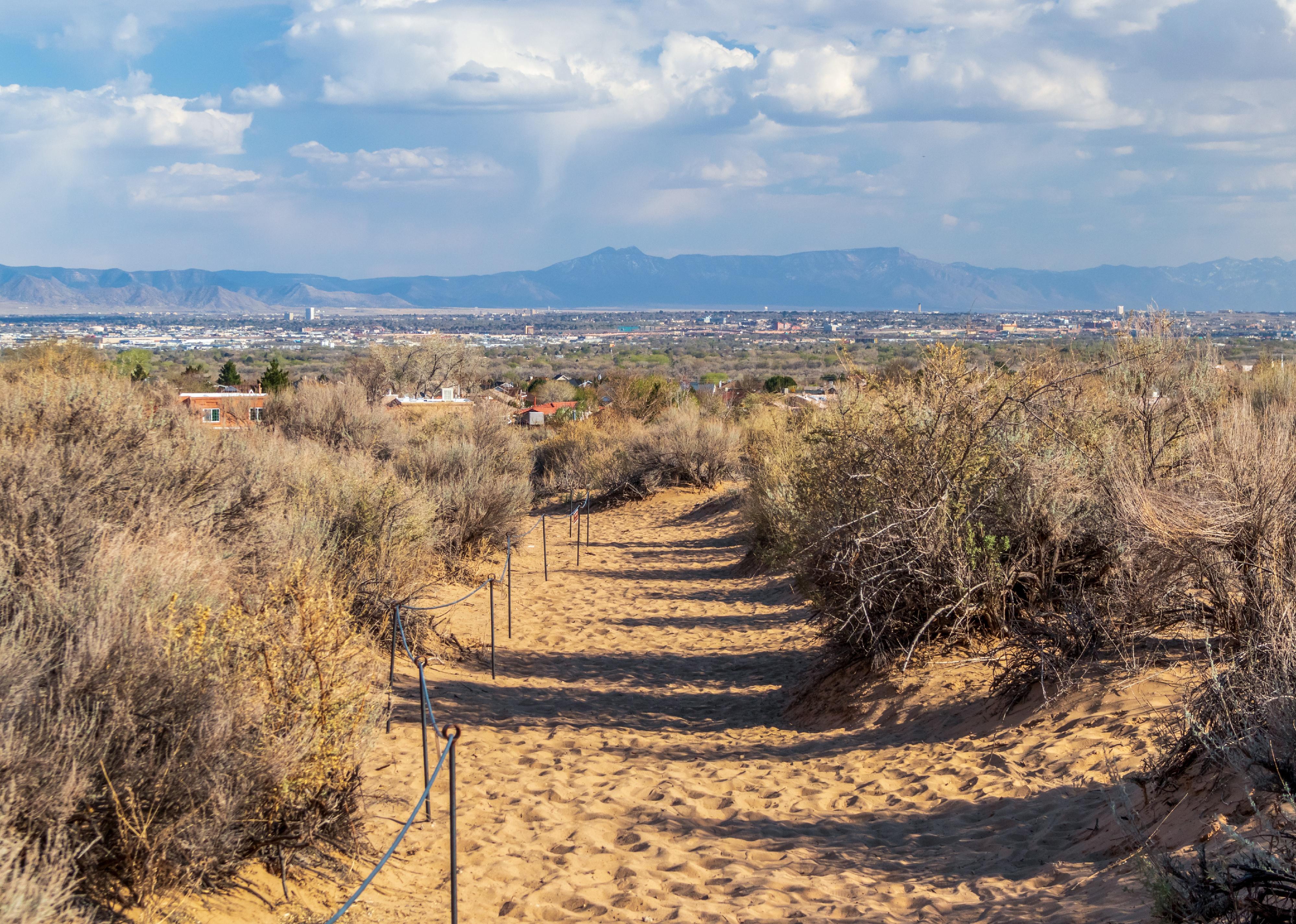
#12. Albuquerque, New Mexico
- Share of city that is parkland: 19.5%
- Median park size: 3.0 acres
- Share of residents within a 10-minute walk to a park: 91%
- Park spending per resident: $104
Albuquerque has nearly 300 parks, but its most famous one is Balloon Fiesta Park, where thousands of people gather each October for the Albuquerque International Balloon Fiesta, a nine-day festival spread out across the park's 86-acre launch field.
When the festival's not on, you can still get your hot air balloon fix at the Anderson Abruzzo Albuquerque International Balloon Museum. The park also features a golf practice facility designed to help you master your skills and a 12,000-square-foot event center.
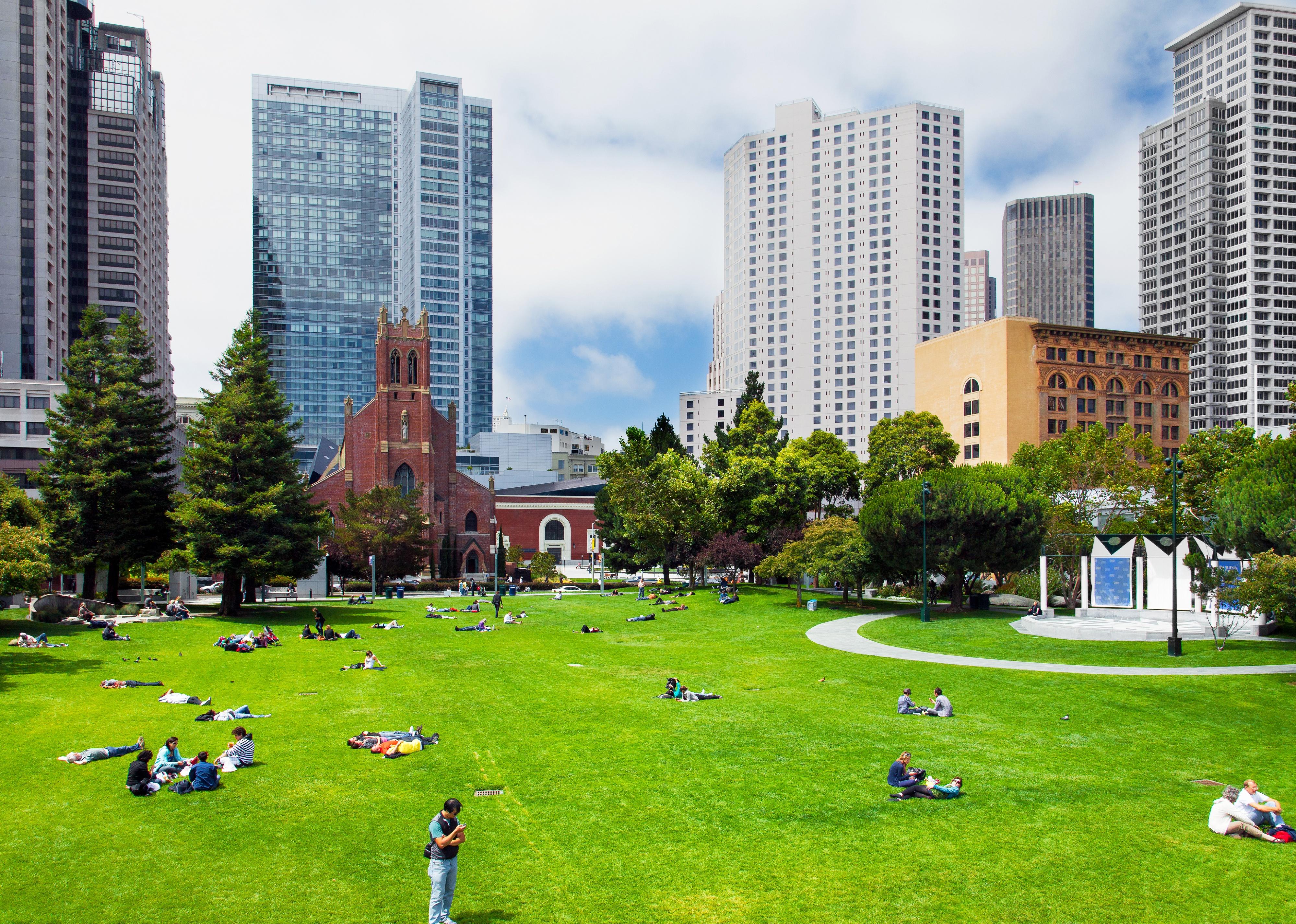
#11. San Francisco
- Share of city that is parkland: 20.6%
- Median park size: 1.3 acres
- Share of residents within a 10-minute walk to a park: 100%
- Park spending per resident: $480
Much of San Francisco's natural beauty and history is preserved at Golden Gate National Recreation Area and the Presidio. This 82,000-acre wonderland includes beaches, views of the Golden Gate Bridge, the infamous shuttered prison on Alcatraz Island, and military outpost at the Presidio.
Visitors can hike, bike, play golf, and visit the Walt Disney Family Museum. In 2022, the Presidio Tunnel Tops opened to the public. This 13-acre area stretches across the tunnels of Route 101, connecting the Presidio with Crissy Field and Golden Gate Beach.
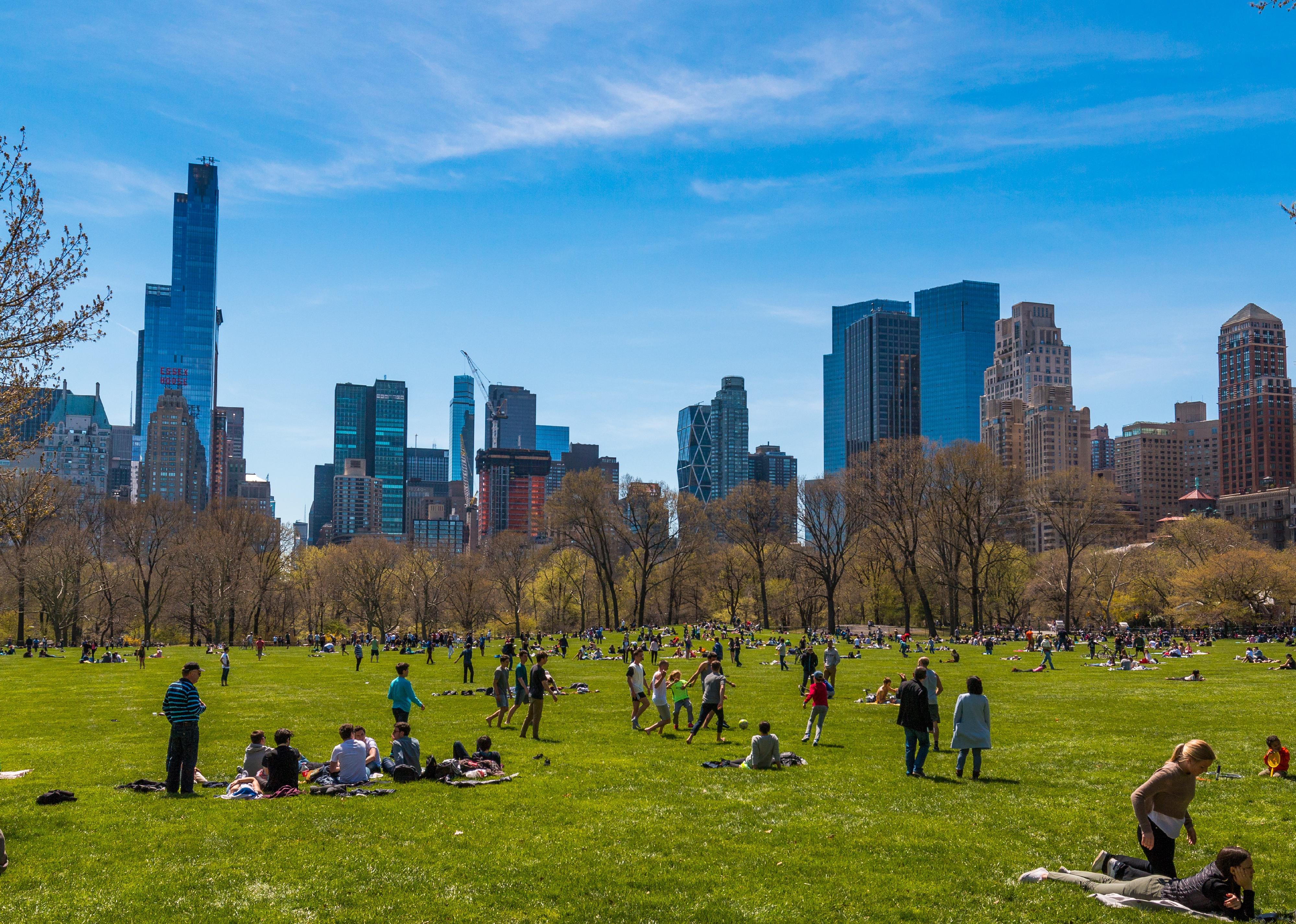
#10. New York City
- Share of city that is parkland: 21.4%
- Median park size: 1.0 acres
- Share of residents within a 10-minute walk to a park: 99%
- Park spending per resident: $199
New York City has some of the most iconic parks in the world, from Central Park in Manhattan to the beach and boardwalk at Coney Island in Brooklyn. While Central Park may be larger than life, Pelham Bay Park in the Bronx has it beat by size. At over 2,700 acres, this park is three times the size of its more famous counterpart—and it has beaches.
Queens' largest park is Flushing Meadows Corona Park, which attracts outdoor lovers and sports fans, who flock to see the New York Mets play baseball and tennis stars shine at the U.S. Open. On Staten Island, the city is turning 2,200 acres, once considered the world's largest landfill, into Freshkills Park. The city plans to complete this transformation in 2036.
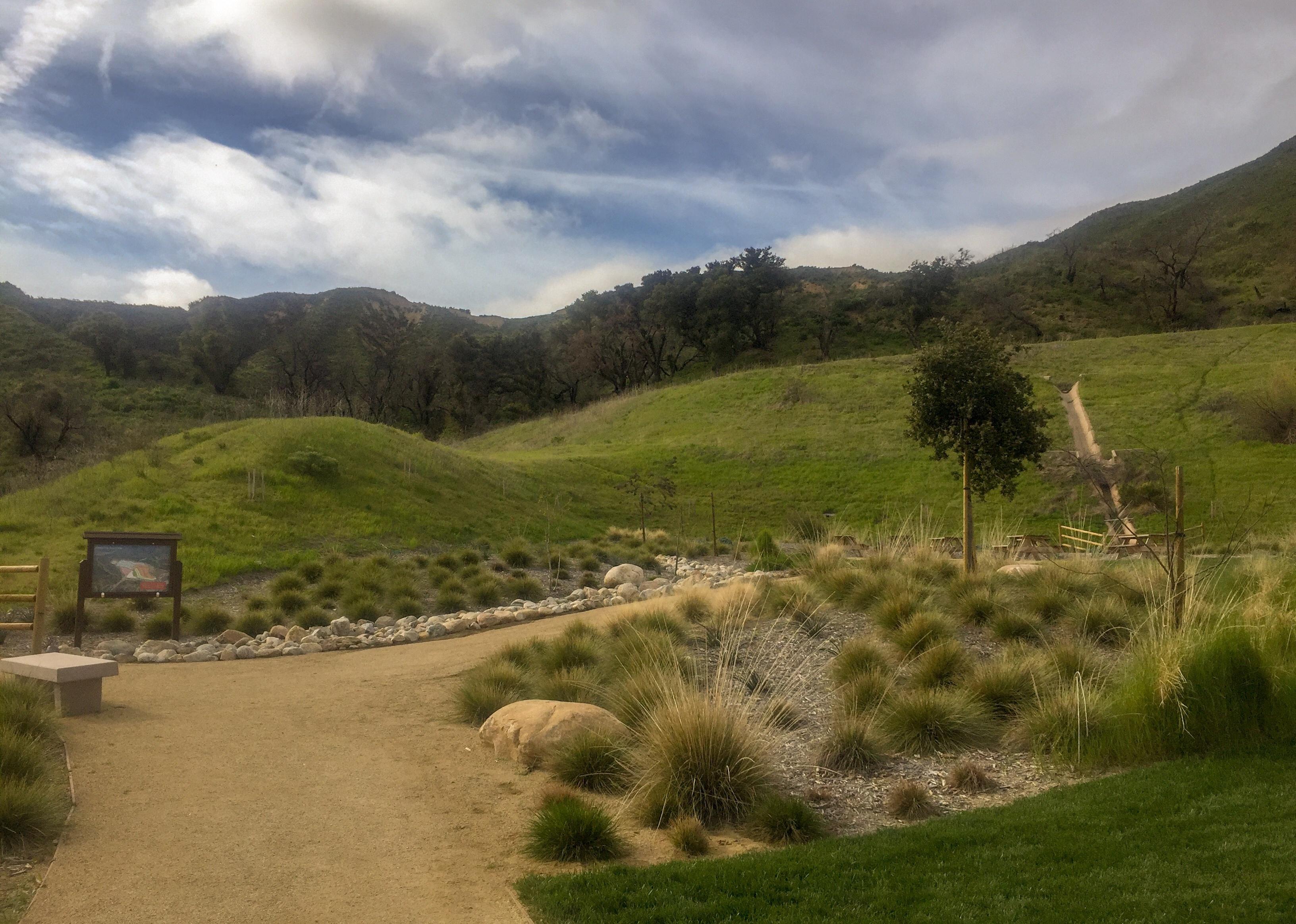
#9. Santa Clarita, California
- Share of city that is parkland: 21.5%
- Median park size: 5.4 acres
- Share of residents within a 10-minute walk to a park: 52%
- Park spending per resident: $224
Santa Clarita's 35 parks have something for everyone, from pickleball courts to playgrounds. The city maintains three dog parks, a skate park, an archery range, six swimming pools, and a massive aquatic center. Cyclists will enjoy the Trek Bike Park, which has mountain bike trails and a pump track for BMX riders with a number of jumps.
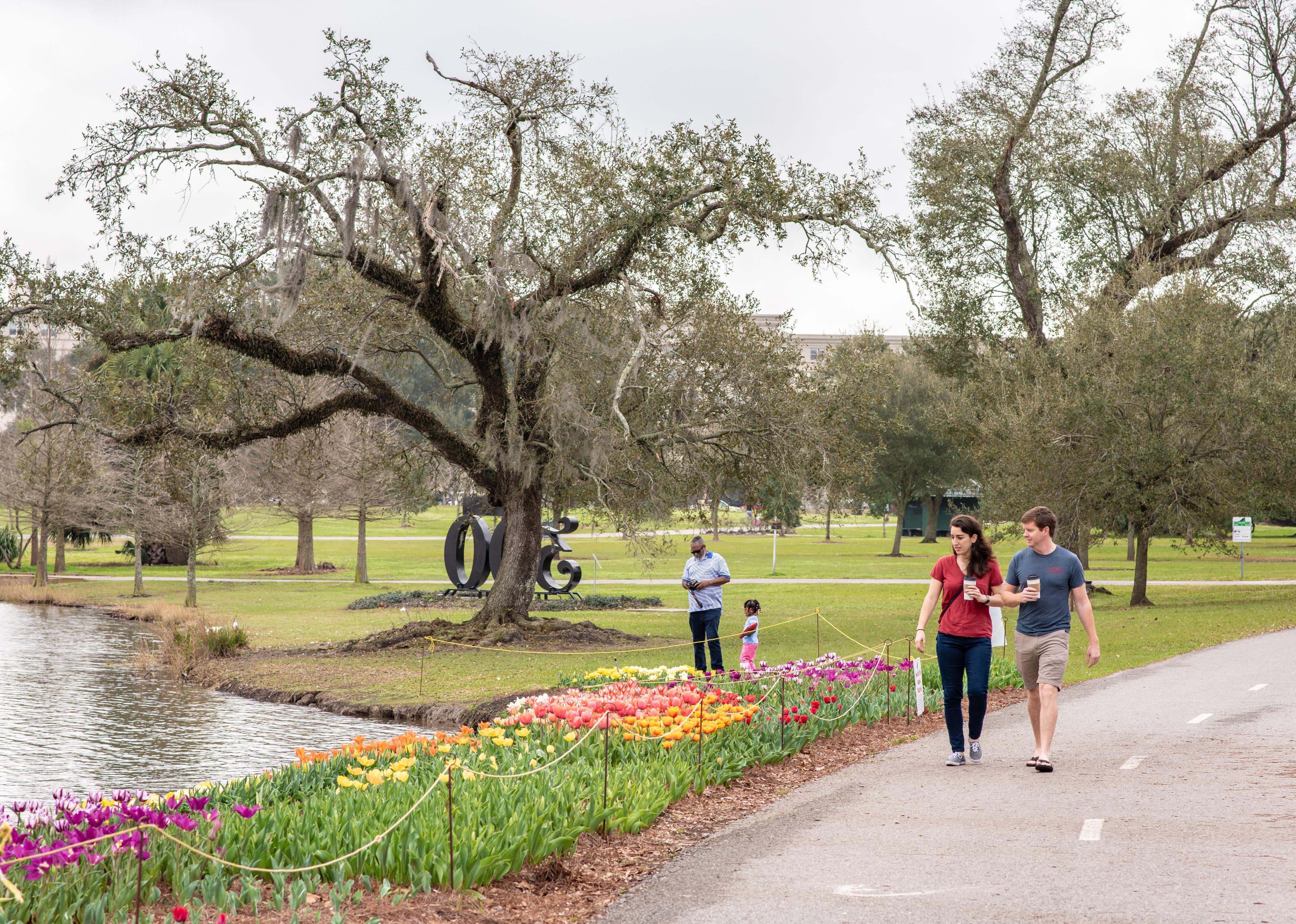
#8. New Orleans
- Share of city that is parkland: 23.0%
- Median park size: 1.8 acres
- Share of residents within a 10-minute walk to a park: 80%
- Park spending per resident: $171
You can find some of New Orleans' oldest history in the trees of City Park—some of its live oaks are over 800 years old. In 2005, Hurricane Katrina flooded 95% of this 1,300-acre gem, causing $43 million worth of damage, but the park has made a roaring comeback.
Visitors flock to its green spaces and museums to take advantage of unique opportunities like horseback rides at Equest Farm and paddling swan boats around Big Lake.
Louis Armstrong Park celebrates the Tremé neighborhood's importance to the birth of jazz music. Woldenberg Riverfront Park and Crescent Park offer opportunities for riverfront jogging and biking along the Mississippi River's banks.
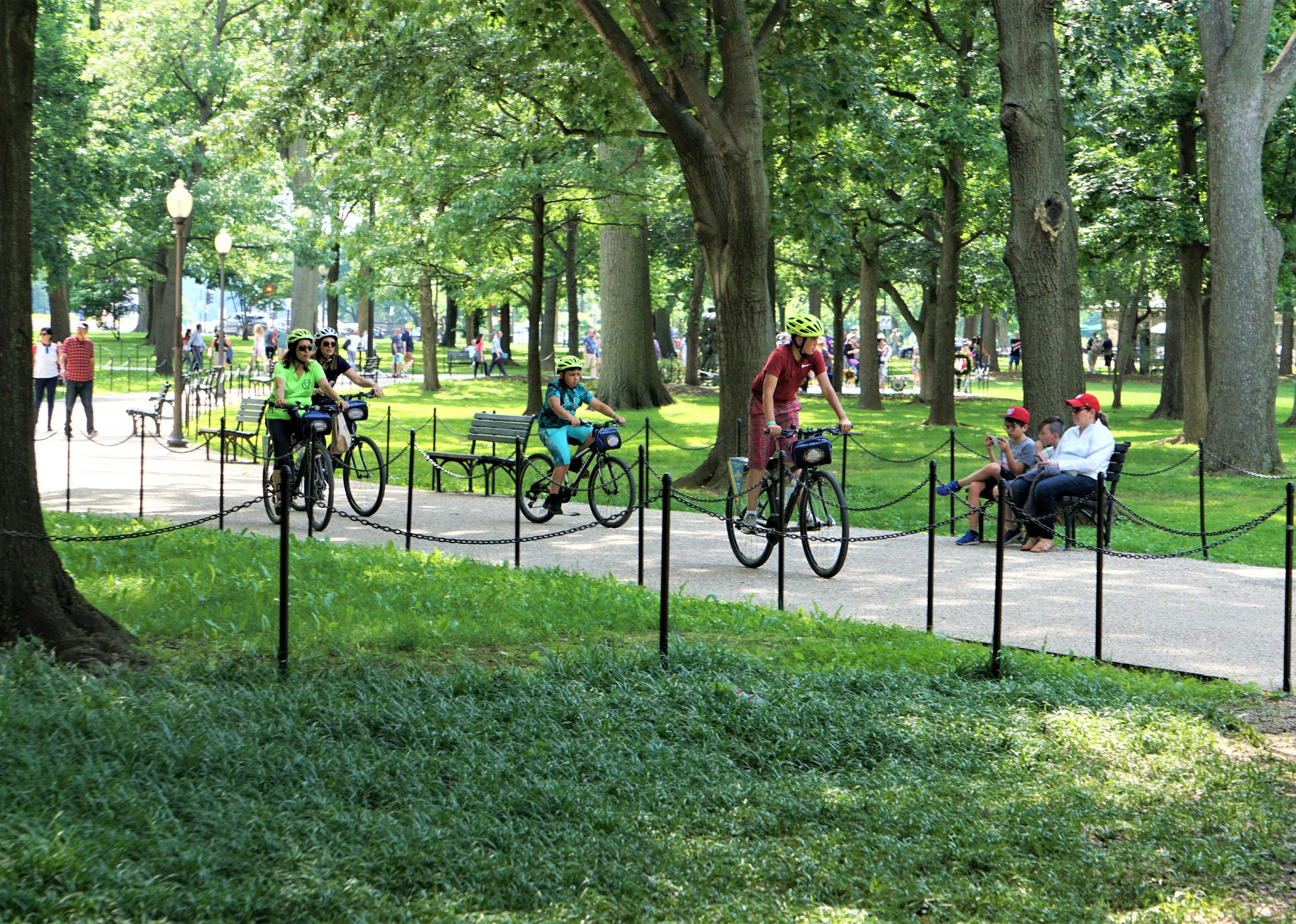
#7. Washington DC
- Share of city that is parkland: 23.8%
- Median park size: 1.4 acres
- Share of residents within a 10-minute walk to a park: 99%
- Park spending per resident: $259
When you think about parks in Washington D.C., the first thing that might spring to mind is the National Mall, the 1,000-plus-acre green space that's home to many significant monuments and memorials honoring American history. However, the nation's capital has many other wonderful parks.
On the city's northwest side, Rock Creek Park offers 1,754 acres of hiking trails, golf, tennis, biking, horseback riding, and paddling along the Potomac River. The Yards Park transformed a Navy yard into a riverfront oasis. Anacostia Park along the Anacostia River is the only park within the National Park Service system with a roller skating rink—and skate rentals are free.
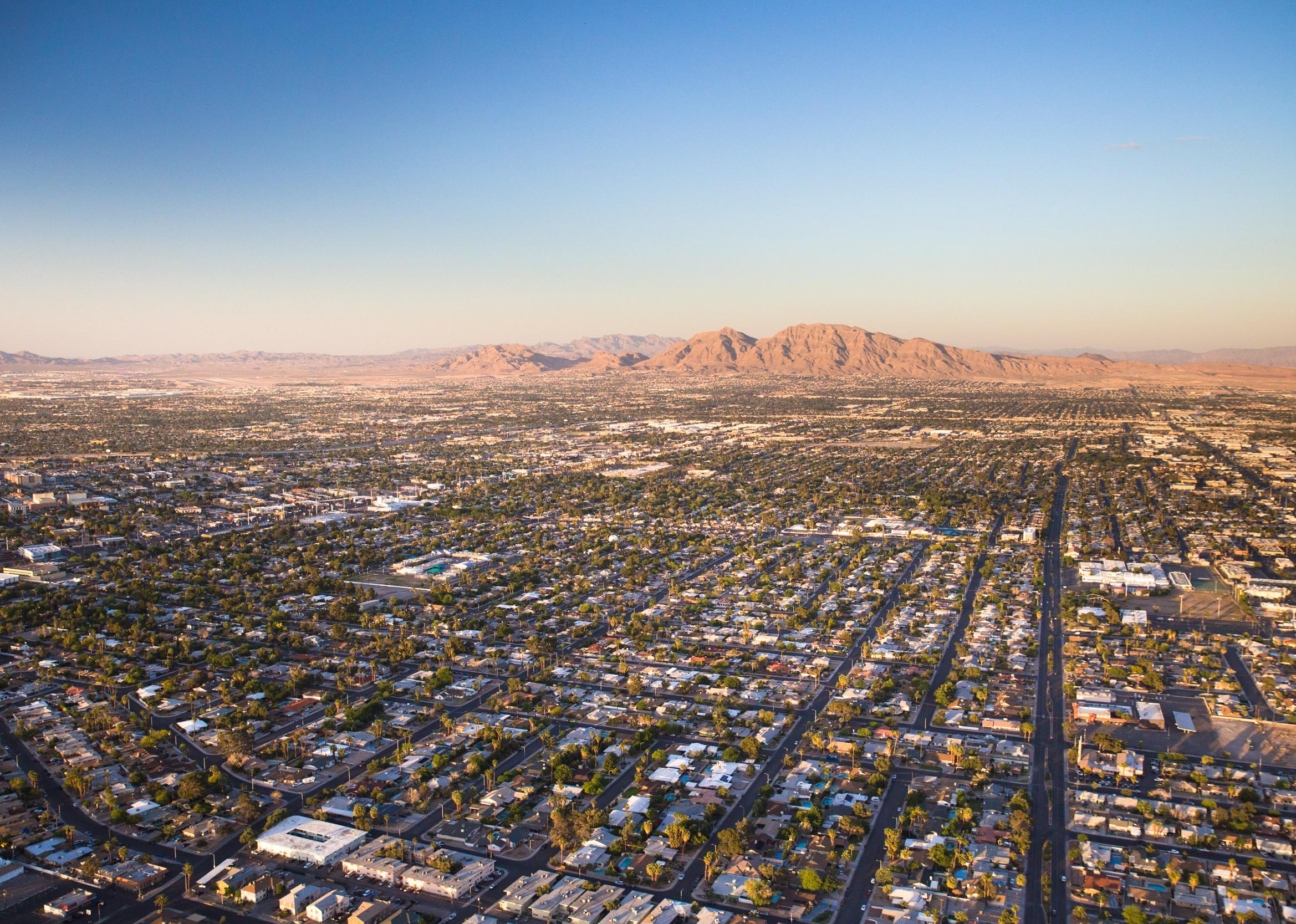
#6. North Las Vegas, Nevada
- Share of city that is parkland: 25.7%
- Median park size: 7.1 acres
- Share of residents within a 10-minute walk to a park: 59%
- Park spending per resident: $129
North Las Vegas packs 33 parks into just over 102 square miles. Its largest park is the 170-acre Craig Ranch Regional Park, created from an old golf course.
This mammoth park features two playgrounds; two dog parks; fields and courts for baseball, tennis, volleyball, and basketball; a 65,000 square-foot skate park, two playgrounds; a disc golf park; nine picnic shelters; and 62 community garden plots. In 2015, it added a 6,800-seat amphitheater for live entertainment.
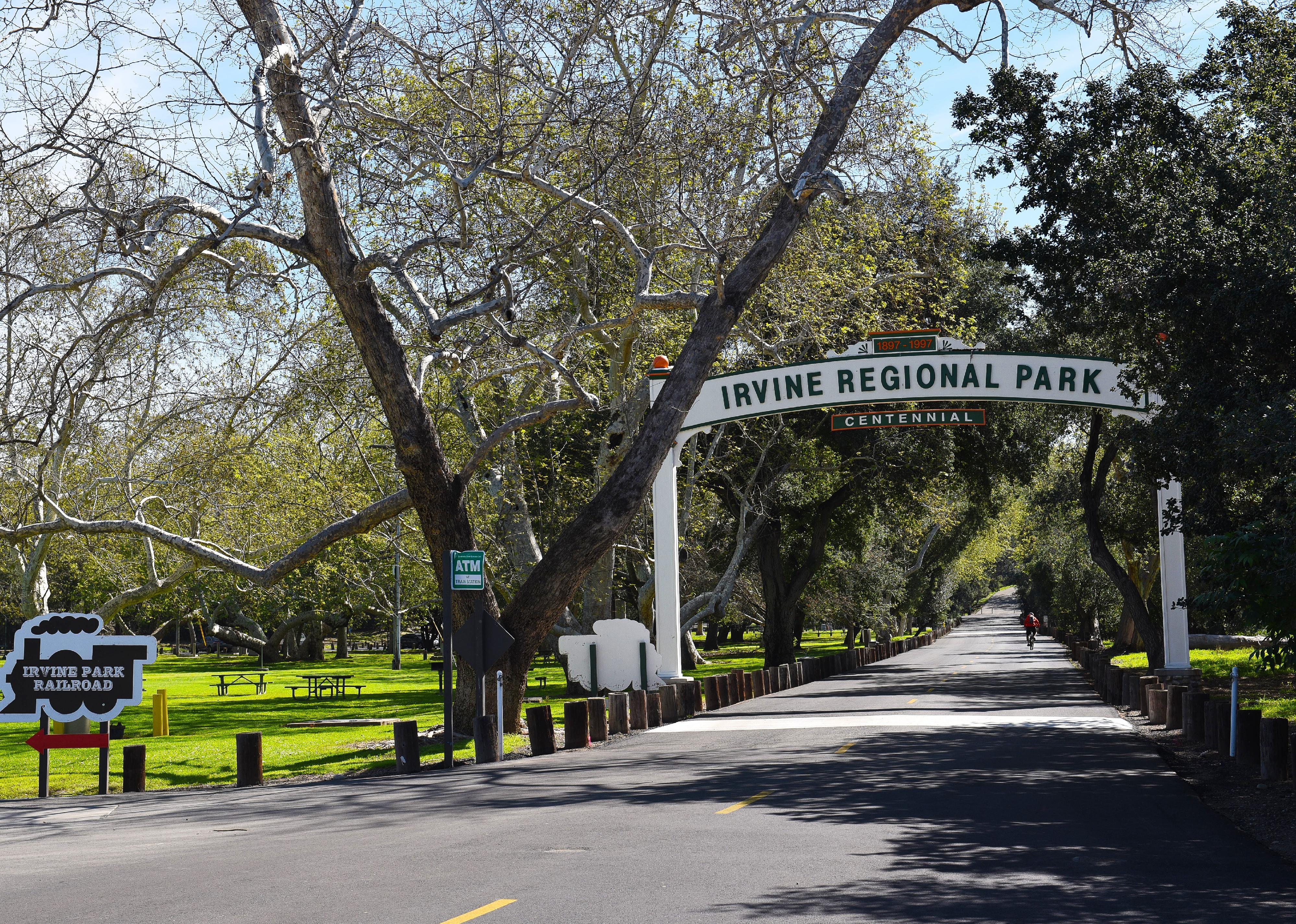
#5. Irvine, California
- Share of city that is parkland: 26.2%
- Median park size: 6.1 acres
- Share of residents within a 10-minute walk to a park: 94%
- Park spending per resident: $284
Since its 1971 incorporation, Irvine has created 55 parks, 5,250 acres of open space, and a nearly 400-mile network of on- and off-street bike trails. One of the city's best-kept secrets is the San Joaquin Marsh Wildlife Sanctuary, 300 acres of coastal wetlands tucked next to the Michelson Water Reclamation Plant.
William R. Mason Regional Park is a stunning 339-acre oasis with a 9-acre lake offering birding, hiking, model boat sailing, playgrounds, volleyball courts, and more. Mountain bikers, hikers, and equestrians enjoy the Bommer Canyon Preserve trails, including original structures from the shuttered Irvine Ranch Cattle Camp.
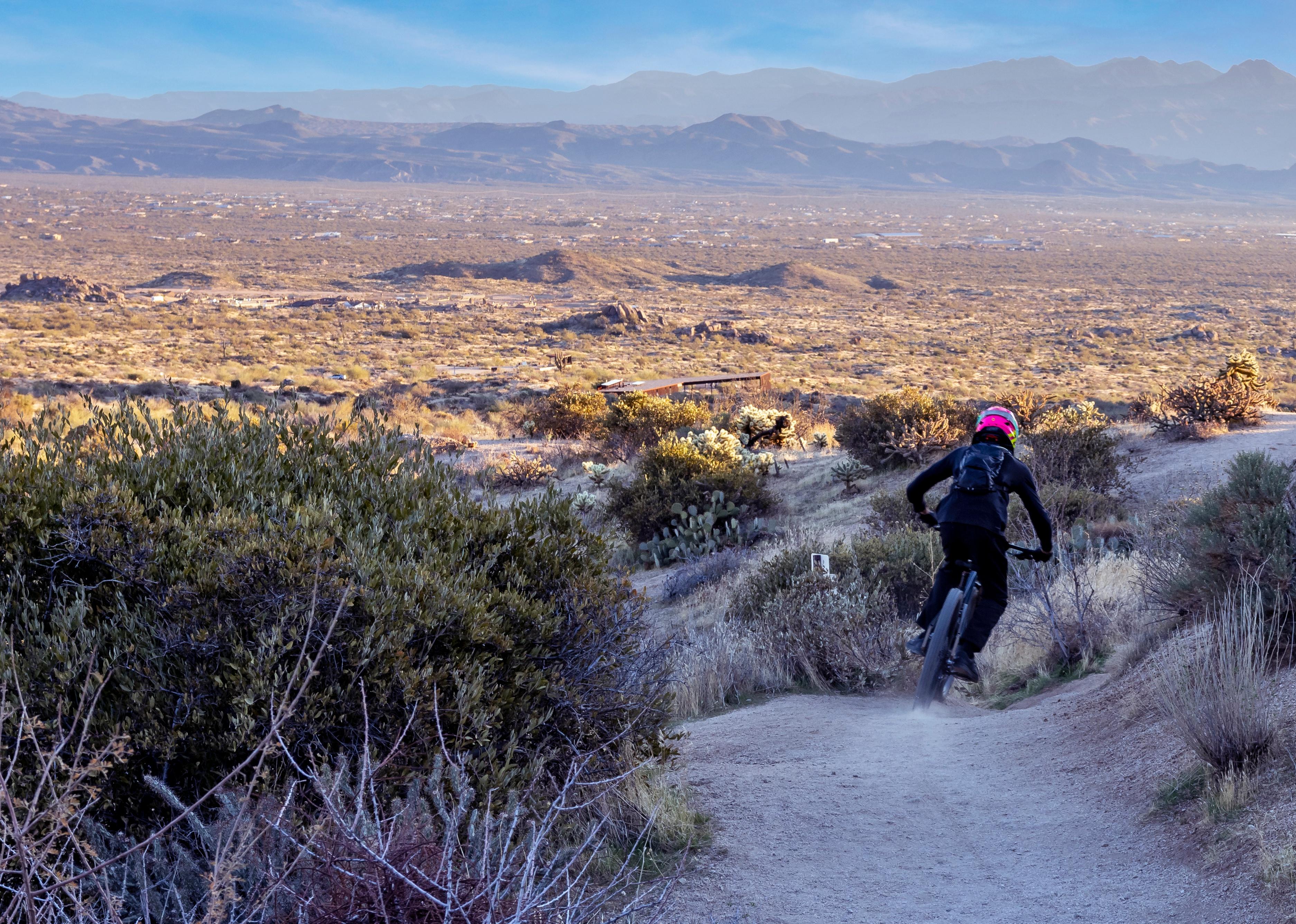
#4. Scottsdale, Arizona
- Share of city that is parkland: 26.9%
- Median park size: 13.5 acres
- Share of residents within a 10-minute walk to a park: 40%
- Park spending per resident: $142
Athletes of all abilities will enjoy Scottsdale's Indian School Park and Tennis Center, which includes courts for tennis, racquetball, beach volleyball, basketball, bocce, and cornhole.
In 2023, the city unveiled an inclusive playground at Thompson Peak Park, its second such playground in the city. It is also wrapping up a $33 million renovation of Civic Center Plaza, a central open space with a stage, water features, and desertscapes.
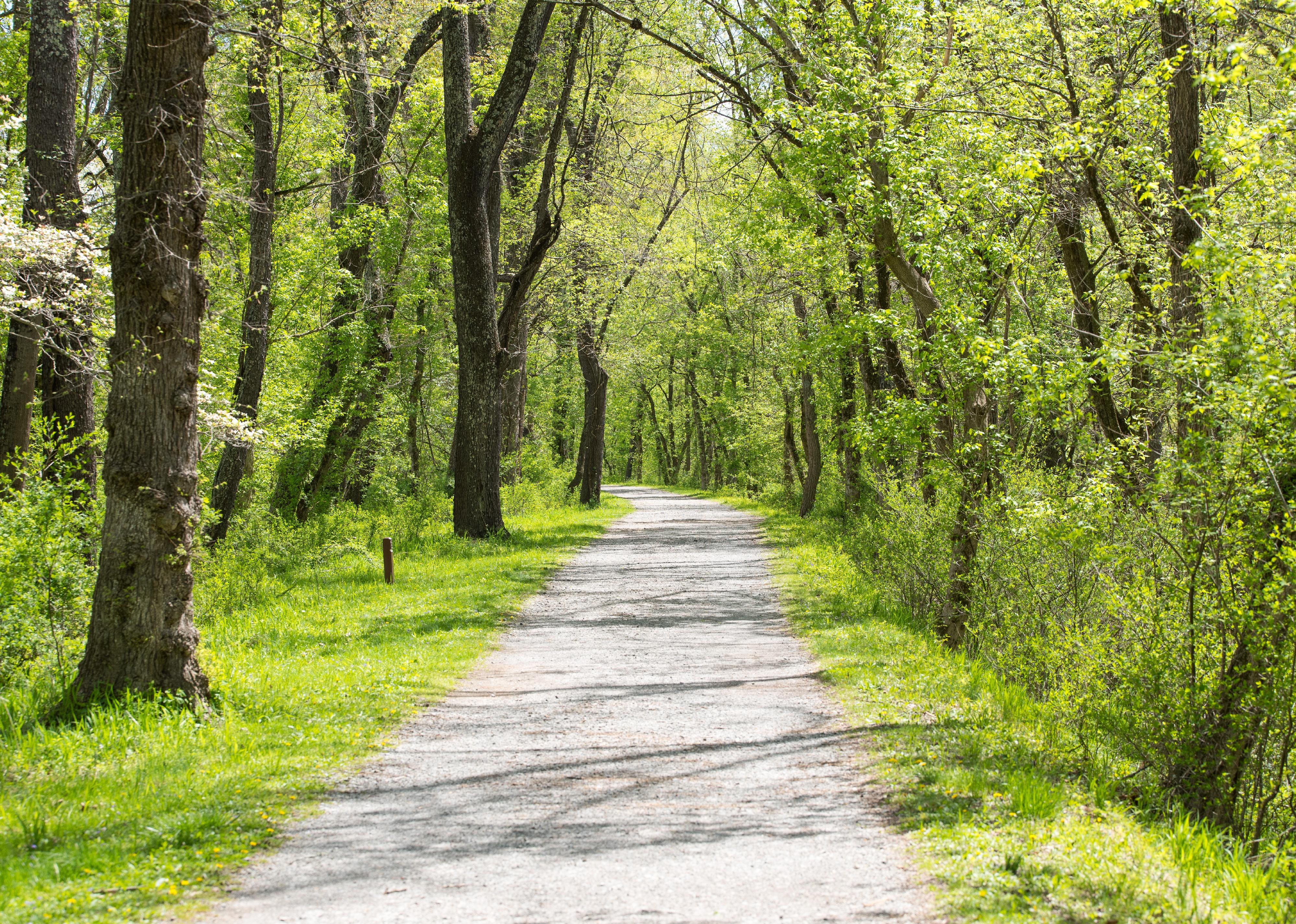
#3. Chesapeake, Virginia
- Share of city that is parkland: 27.2%
- Median park size: 7.2 acres
- Share of residents within a 10-minute walk to a park: 46%
- Park spending per resident: $98
Parents can wear out their children at Fun Forest, a massive 3-acre playground within Chesapeake City Park. City Park also hosts major events, festivals, and concerts throughout the year. The city also maintains its campground at Northwest River Park & Campground. This 763-acre park offers boating, fishing, hiking, miniature golf, and disc golf, allowing residents to escape it all without leaving town.
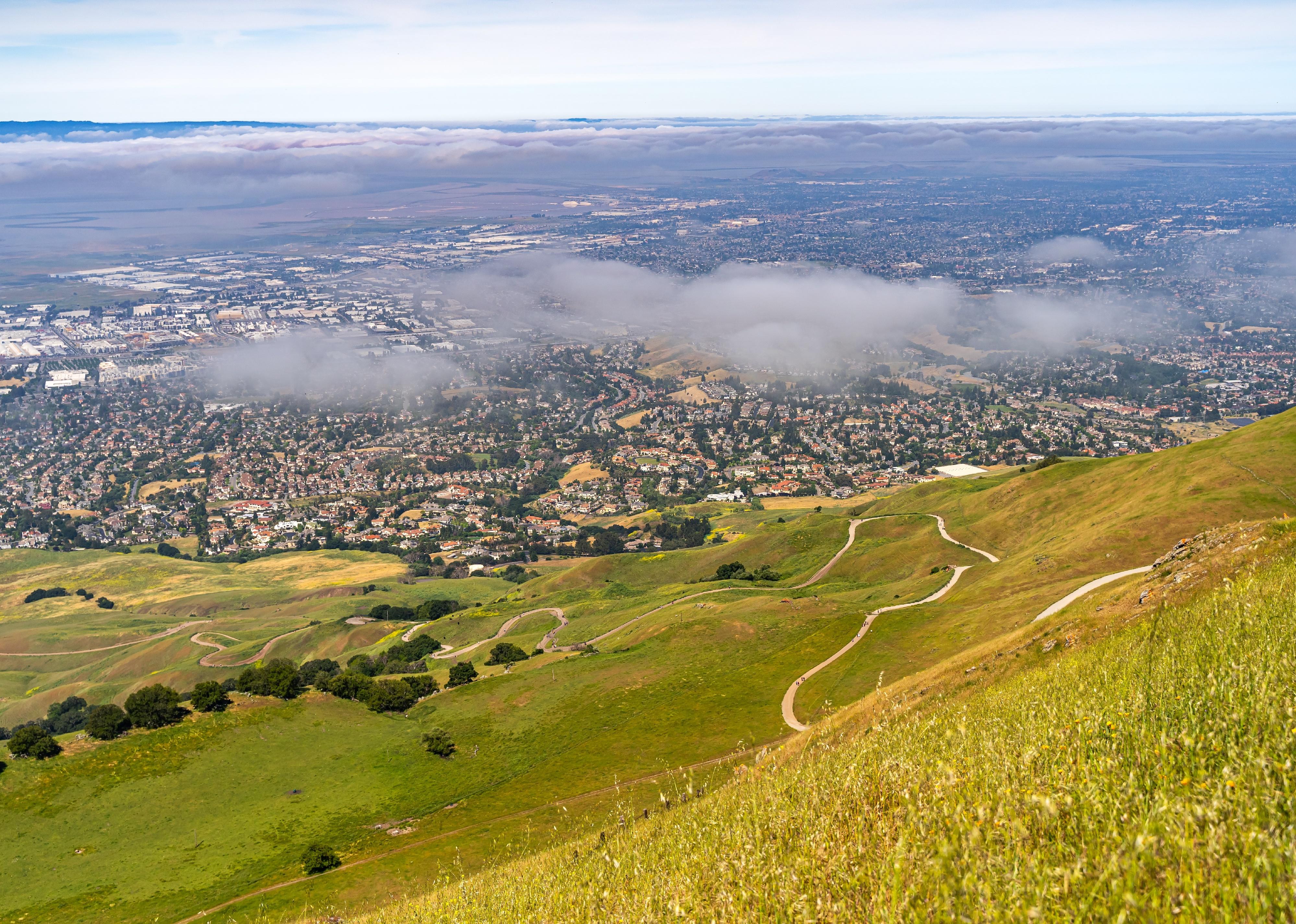
#2. Fremont, California
- Share of city that is parkland: 44.0%
- Median park size: 7.0 acres
- Share of residents within a 10-minute walk to a park: 73%
- Park spending per resident: $155
Located about 40 miles southeast of San Francisco, much of Fremont's shoreline is parkland. One of its major coastal parks is Don Edwards San Francisco Bay National Wildlife Refuge. This 10,580-acre area offers fishing, waterfowl hunting, birding, hiking, and a butterfly garden in its nature center.
Cyclists can ride paved trails that connect to Coyote Hills Regional Park, which offers great views of San Francisco's skyline on clear days. The city of Fremont also maintains Aqua Adventure Waterpark, an ideal way to keep cool in the summer.
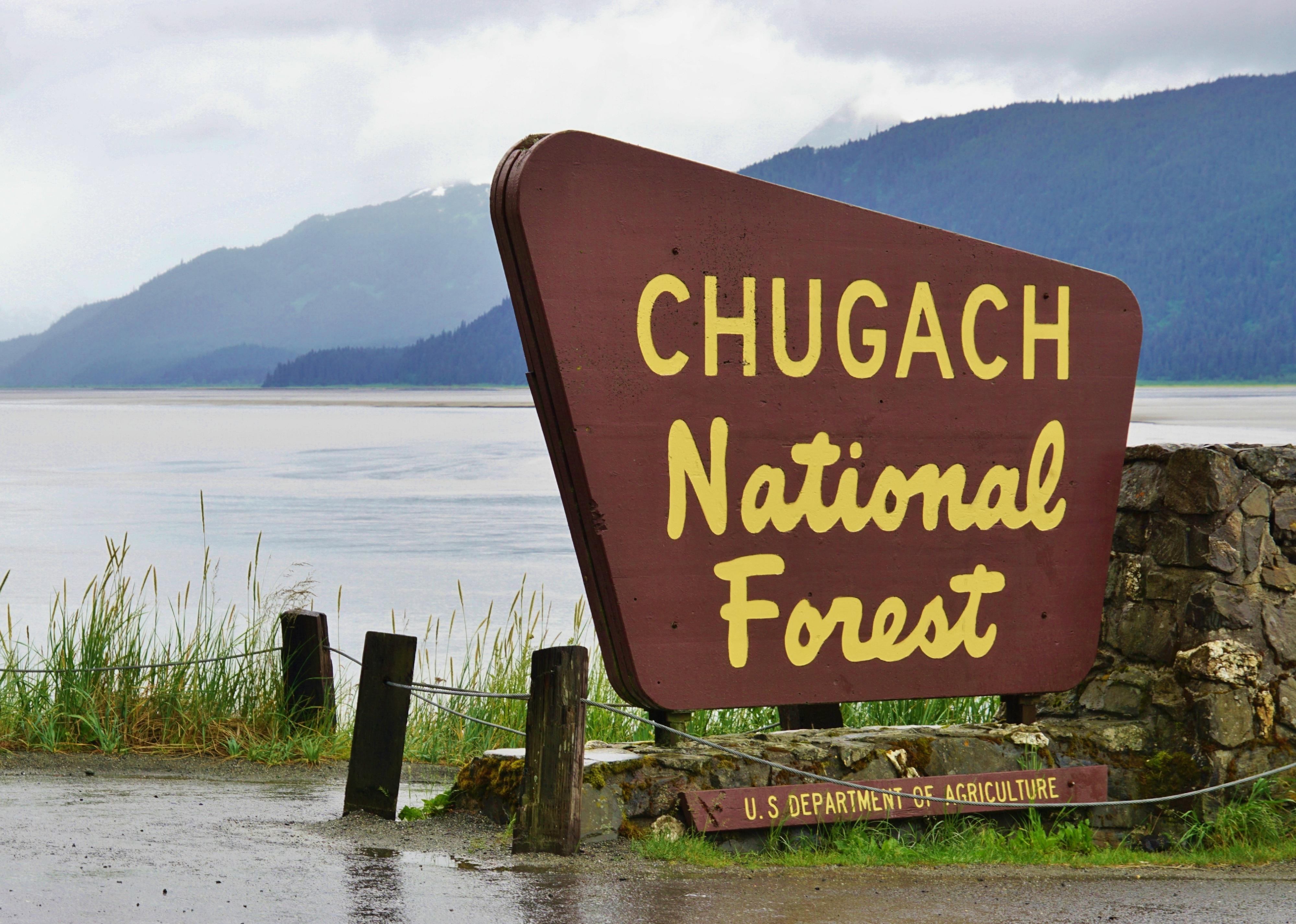
#1. Anchorage, Alaska
- Share of city that is parkland: 80.2%
- Median park size: 4.7 acres
- Share of residents within a 10-minute walk to a park: 76%
- Park spending per resident: $88
The great outdoors is vital to residents of Anchorage, which boasts nearly 11,000 acres of parkland. One of its largest parks is Kincaid Park, on the city's western side along Cook Inlet, where it's not unusual to spot a moose or a bear while you hike, bike, or cross-country ski.
One of the city's newer parks is Chanshtnu Muldoon Park, which transformed a vacant lot on the east side of the city into a 26-acre center that features an inclusive playground, farmers market, ice skating ribbon, dog park, bike pump track, and community garden.
Story editing by Jeff Inglis. Copy editing by Tim Bruns. Photo selection by Clarese Moller.



